It was last May that my passion for 56th Street, on the fringe of the Country Club District, developed into an obsession. On special assignment, I had snuck to see if I could uncover the Archie Love summer home, just a side note, really, to another case I was working. (Those who have previously walked the My Omaha Obsession beat might remember my swelling preoccupation with all things Mr. Love, founder of Loveland in District 66.) From Miami to Blondo Streets, I crept along 56th and felt somebody was waiting to tell me something. I hushed and lurked as I absorbed the unique ambiance. The lone, unusual, brick Benson road…I had wandered there before in a childhood girl gang, surveying the historic, wavering, rippled design, “like the olden days,” we had long ago surmised. But there my experiential knowledge of 56th Street stopped. The fine structures, proudly adorning the hand-laid lane were each perfect in their way and now with adult eyes, I could see, within a curiously arranged collection. I suggest this in the Best Way, I promise you. I had resolved to call upon the Archie Love home and every one of the unexpected beauties in due time, for there were so many mysteries to be solved, but on that May day, it was the massive Shingle Style that made me catch my breath.
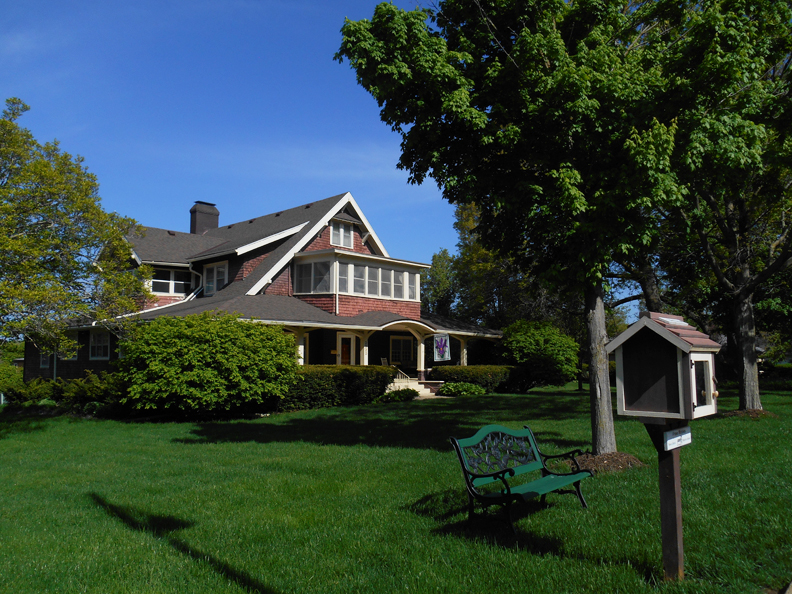
2320 North 56th Street. 56th and Erskine. My impression of her remarkable nature was one of bark-covered warmth and welcoming, an accomplishment considering her commanding composition. I observed her to be one of a handful of large, gracious, older, east-facing homes complete with rambling gardens.
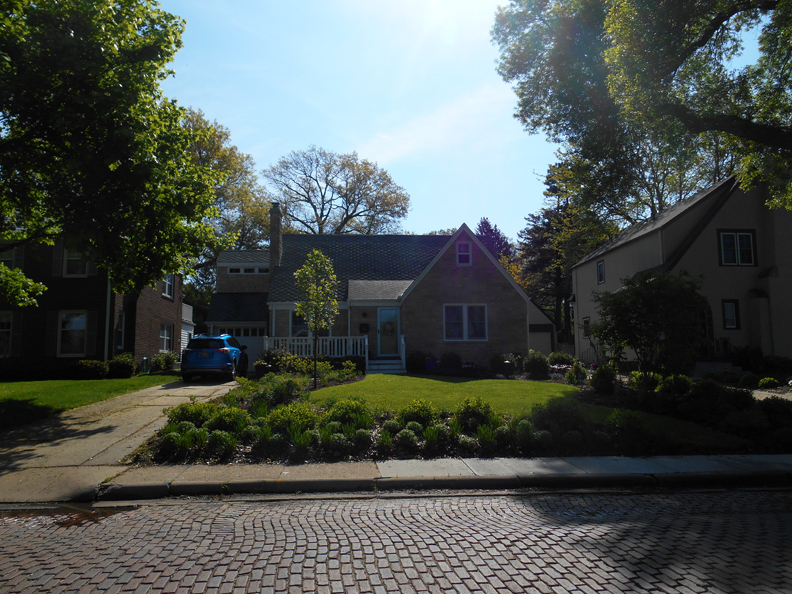
Across the street were smaller, much younger, stylish, west-facing homes, modestly set back from the brick street.

2320’s handsome, woody form resembled the well placed lodge at tennis camp or an elusive Hudson Valley weekend retreat. So very spacious, carefree and American. She easily played the unpretentious hostess in a crowd comfortable enough to determine this subtle irony in decorum. Her dark, recessed, wrap-around porch seemed the perfect Eastern seaboard hideaway from our exceptionally hot and humid Nebraska summers. Floating, I wanted to subsume into the continuous, shingled darkness with lemonade and a folding fan. Oh I lingered much too long and became all unnecessary in my leisured class plan! The mind throbbed. Were it not for the Dawn Chorus and my surreptitious shantung wedges, I might have drawn interest from curious neighbors, as I turned round and round. My Chagrin.
Straightening my spine, I questioned myself. The investigator in me suspicioned the Summer Shingle a fine deceiver…or was this a whole block of enchanting deceivers?
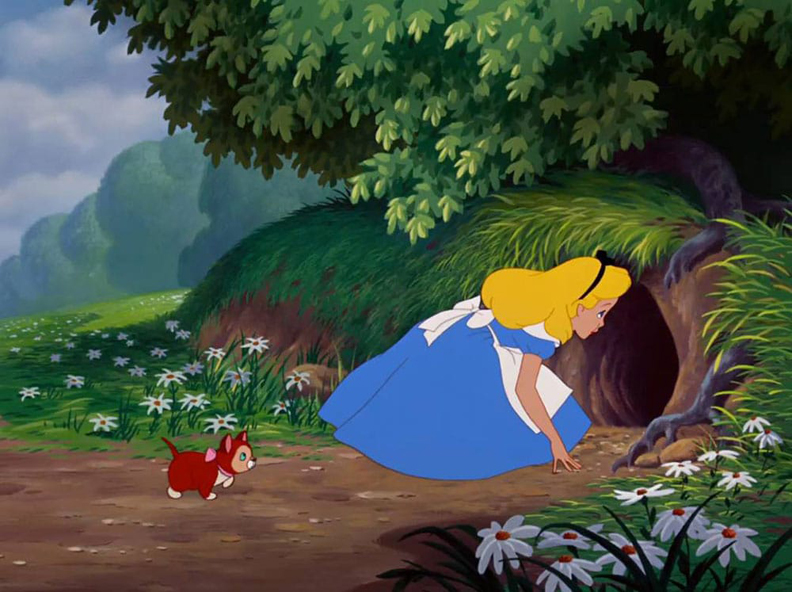
Investigation at a Glance: Front row seating along the original Omaha Country Club perimeter, Benson’s Shingle Style beauty served as summer lodging for wealthy Omahans looking to create a fresh Country Society escape from the city. This deep dig unearths the early years on North 56th Street.
The Countryside and Mr. Erastus Benson
Long before this lovely north-south bricked road became the western border to the unified glory of the Country Club neighborhood, with its desirous Tudors, and sprinkling of Colonials and French Eclectics to the east, 56th Street was once the grand promenade of the select, large homes prominently positioned on her west side. Back then the handful of sprawling “summer cottages” signified a first in Omaha– gentrified country living. It was a Society Signal and in case one couldn’t detect the whistle, these homes were overtly positioned for front row seats to the original Omaha Country Club. (I am as excited as you and soon we will dig into all of these perfect details.) But even before these fine structures were planned, this area was once rolling countryside, known for its amazing view. According to Benson, Nebraska From Buffalo Pasture to City, Erastus Benson bought and platted John Creighton’s 900-acre farm in March of 1887, naming it Benson Place. “The first lots were west of 60th Street and north of what is now Maple Street.”
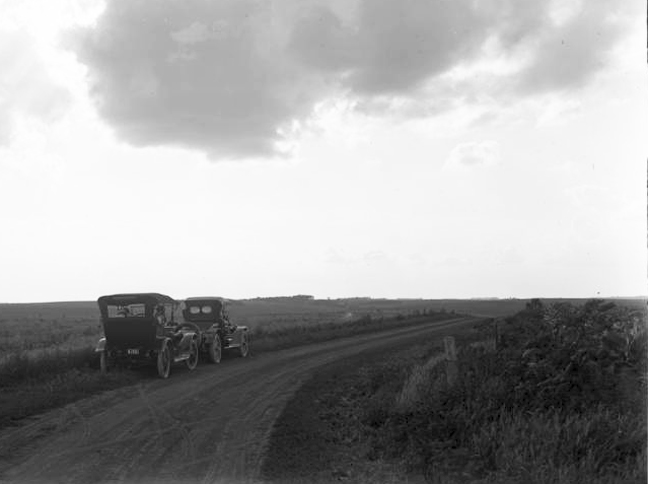
Military Road. Creator: Bostwick, Louis (1868-1943) and Frohardt, Homer (1885-1972). Publisher: The Durham Museum. Date: 1914-07-05.
The World-Herald would hint Erastus Benson’s development was established along the old U. S. Military Road, now called Military Avenue. Military Road was designated on high ground, by the government, so soldiers and settlers would have “a far view of any trouble coming.” By the time 56th Street made the grid, in this neck of the woods, Military Road/Avenue was labeled north and perpendicular to the area of our focus, where Northwest Radial Hwy/Maple Street now runs. Confused?
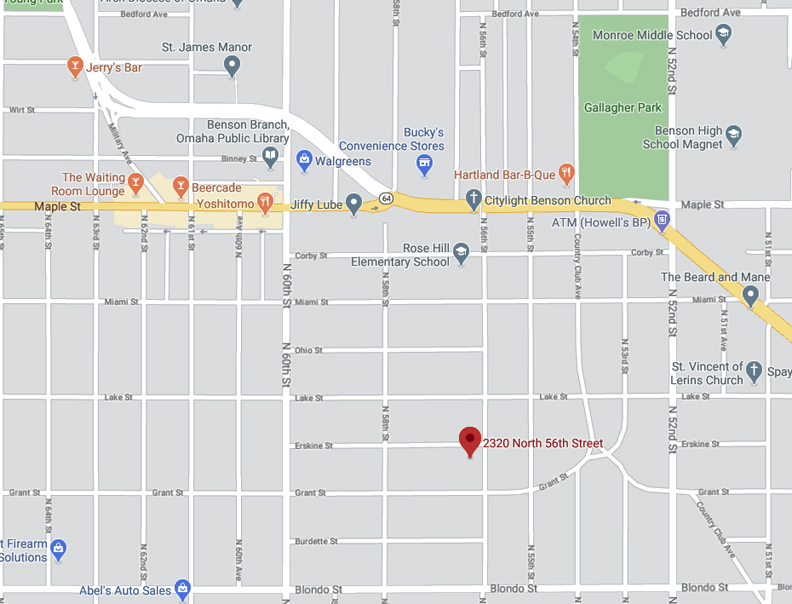
2020 map. Image borrowed from Google. 2320 North 56th is flagged in red. Northwest Radial Highway is shown meandering across the top of the image in yellow. Oddly, the old maps of Benson depict NW Radial as Military Avenue. H. Ben Brick’s The Streets of Omaha: Their Origins and Changes offered up fickle Military was also called Military Street (particularly between 56th Street and 60th), Military Boulevard and Old Military Road through these early years. As a former 68104-Bensonite, I can tell you, we just called it Military and avoided all hassle.
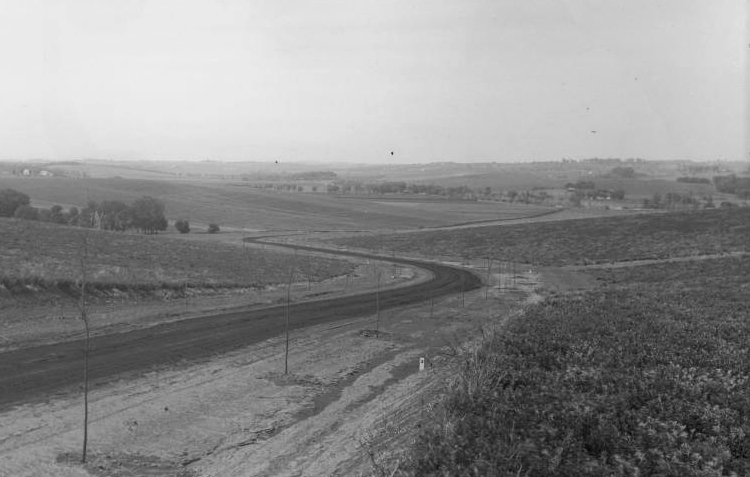
It was hard for me to fathom 1887, let alone the far removed countryside of Benson, quite a jaunt from Downtown Omaha. Although Benson Place was underway, the swath of land surrounding 56th Street would remain pastoral for quite a few more years.
According to An Inventory of Historic Omaha Buildings prepared by Landmarks, Inc. under a grant from the City of Omaha and in cooperation with the Landmarks Heritage Preservation Commission, 1980, the 2320 North 56th Street Shingle was registered as historic but without owner, builder, or architect details listed. UGH, sighed the amateur detective.
Rose Hill Development
I would learn from the Douglas County Assessor/Register of Deeds’ site, 2320 North 56th Street was encompassed in the Rose Hill Addition. Her legal address carried additional information “Lot 4, Block 6.” Sometimes labeled “Rosehill,” this subdivision was said to describe the area’s terrain and abundance of wild roses. The hill and its once field of vision also gave credence to the story line of panoramic Military Road. Why did I delight in finding that 56th Street was originally called Rose Hill Avenue? Through The Streets of Omaha: Their Origins and Changes, I learned 56th Street was initially named Rose Hill Avenue. Author Brick also suggested, “The subdivision was named for the fact that the hill was once covered by wild roses.” This also tidily decoded Rose Hill Elementary School just north of these perfect homes, at 5605 Corby Street.

Map depicting the properties of Rose Hill subdivision. Image borrowed from the Douglas County Assessor. Rose Hill subdivision is bordered by 56th Street on the east, Blondo Street on the south, 60th Street on the west and Northwest Radial Highway/Maple Street on the north.
I discovered piles of fascinating clues in my search but The Beginning-Beginning began at the Register of Deeds’ office. Had it not been for Mr. Cassette’s ability to navigate an imagined sled dog team, this investigation might not have gotten underway—for it was a wintery day that pret’ near shuttered Omaha, except for the Register of Deeds’ office and La Buvette, thankfully called upon in that order. Wrapped in a wool cape, my tallest Papakha, complete with a red nose, I found amusement in both locales.

Early Landowners
An early Rose Hill deed at the Register of Deeds’ office divulged E. M. Stenberg selling lots 3, 4, 5, and 6 of Block 6 to a G. A. Lindquest in July of 1888. This was the very land that our 2320 North 56th would later be constructed on. However I did not find formal mention of the Rose Hill Addition in the World-Herald until the summer of 1889, when an O. M. Olson sold land to A. J. Smith. After that point, I would continue to light on the names Mary Stenberg, Ole M. Olson and G. A. Lindquest. I began to theorize that these landowners had acquired this rural area to develop and/or sell off at a profit. The wonderful Benson book compiled by the Benson Historical Society, made mention of Ole Olson as “son of Oscar Olson and grandson of Charles Olson who founded Olson’s Meat Market. Ole sold model airplane kits and supplies, and eventually expanded to open the Hobby Center.” Any Benson child knew the tantalizing Swiss Chalet-look of the Hobby Center, front and center on Maple. But the Ole of Hobby Center fame’s legal name was Oscar Leonard Olson, Jr., not “O. M. Olson;” additionally, the dates were off. I wondered if there was a misspelling? Or perhaps Oscar Olson, Sr. was also called “Ole.” Did Mr. Olson Sr. own these early Rose Hill lots, was their another O. M. family member or another Olson altogether? Stumped.
Footnote for those who relish controversy: according to the Omaha World-Herald there was some 1890 local dust-up with respect to the grading of blocks 1 and 16 in the Rose Hill Addition.
E. M. Stenberg was revealed to be none other than Judge Emory Stenberg, Omaha Famous justice of peace, Swedish newspaper manager, police judge and Douglas County Commissioner. History of the City of Omaha, Nebraska by James Woodruff Savage and John Thomas Bell, wrote of E. M. Stenberg having found his way to Omaha by 1870 where he would work for the Union Pacific. He also served as Swedish consul in Omaha for twenty-five years at the time of his death in 1914. I found Judge Stenberg owned real estate throughout town, but it appeared he had amassed the largest swaths in Benson where he resided. Originally born in Kosta, Sweden in 1845, Stenberg was educated as a steamboat engineer, later graduating from an engineering college. As I’ve marveled before, early Omahans appeared to capitalize on uncanny, varied expertise often leading to complicated career paths. Or maybe it was the Big Fish-Little Pond Effect?
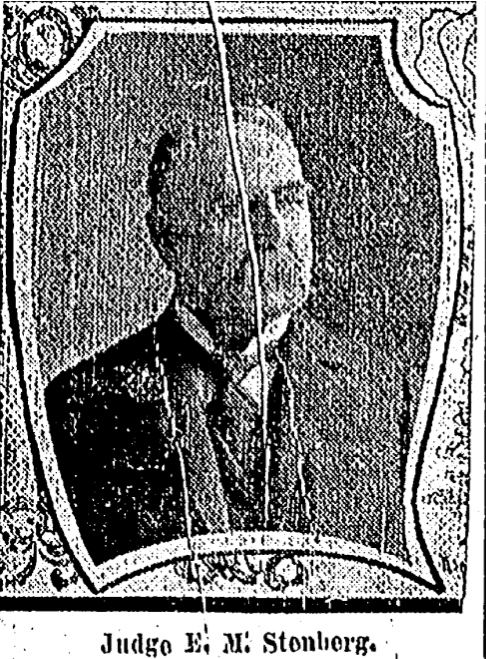
Photo of Emory Stenberg from his OWH obit, dated February of 1914.
Many of the family’s real estate holdings were under wife Mary Stenberg’s name. She died in April of 1911. The couple had two sons, Erve and Albert and two daughters, Grace and Mabel. Of deeper interconnection to Rose Hill–daughter Mabel Stenberg would later marry aforementioned Oscar Leonard Olson, Sr. The couple resided at 2122 North 56th, which I believe might have been the original Stenberg family estate, just south of our 2320 North 56th Street. The couple would have son, Oscar, Jr., who later became Hobby Center proprietor, “Ole,” often spelled “Olie” Olson.

The lovely 2122 North 56th Street. Photo borrowed from Google Map.
Another of the early Rose Hill land owners, G. A. Lindquest, was mentioned in Edward Francis Morearty’s writing. Morearty saw fit to catalog G. A. Lindquest among the “prominent” men he viewed as responsible for “the upbuilding of Omaha” in his fantastic wandering, Omaha Memories: Recollections of Events, Men and Affairs in Omaha, Nebraska. Lindquest is listed right after My Omaha Obsession favorite, John L. Webster. Mr. Webster was also noted for “never seen without a chronic vest,” which somehow seems very now. Morearty awkwardly registered the names of those men “who never figured prominently in affairs but who pursued the even tenor of their way” and stood by Omaha nonetheless. The G. A. Lindquests resided at 701 South 13th, while he owned and rented out “tumbledown shanties” around 10th and Jones, flats, lots and various buildings sprinkled throughout Downtown and much farmland surrounding Omaha proper. Between the eviction notices and exploding stoves, it was not difficult to find his name.
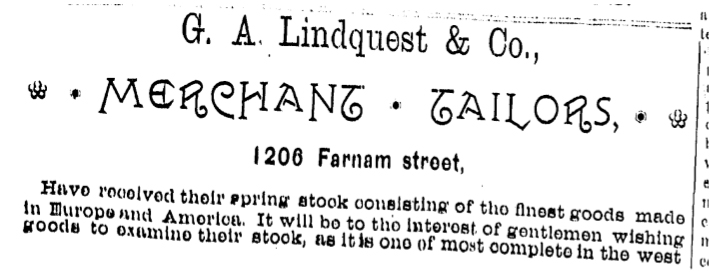
February 26, 1886 advertisement from OWH archives. Lindquest’s profession was that of merchant tailor. Just look at the best font. During the time of his frequent advertisements for his downtown second floor business, he owned much of the land that Rose Hill later inhabited.
It wasn’t until I was up to my neck in the case, that I learned their proper names. Gunnar Lindquest had come to Omaha in 1869 and his wife, Kristine Brown arrived one year later, although their romance had begun in Sweden. The family lived at 2722 North 58th Street by the 1920s. They had three children, one daughter (who died suddenly at the age of 18) and two sons.
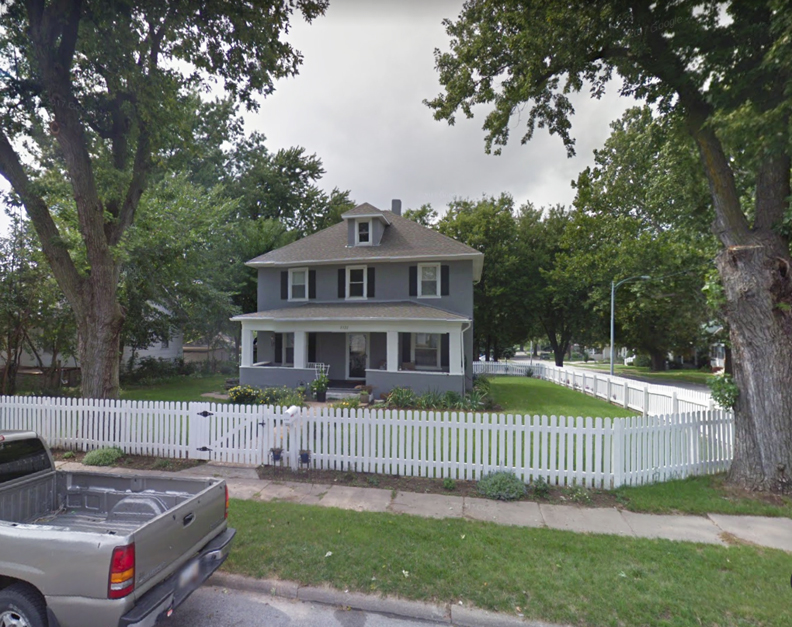
2722 North 58th Street, supposedly built in 1905. Sign me up for a tour of this one! Photo borrowed from Google Map.
A great description of Rose Hill was discovered within the pages of From Benson, Nebraska: From Buffalo Pasture to City. “The land east of 60th Street was mostly pasture for dairy cattle with only a few scattered houses. Before 1900, Jacob Gehrig’s dairy cows grazed where the Country Club would soon be developed; his home was nearby. Charles J. Johnson, Axel Smith and James Pedersen were among the few other residents in the Rose Hill area.” I wondered if Axel Smith was the A. J. Smith I had peered in the early World-Herald sale? From my research, the Rose Hill landowners that I looked into, the Stenbergs, Olsons and Lindquests, were of Swedish descent. This may or may not fascinate anyone but me. I began to realize that these families were not just investing in early Benson to turn a profit, they also had homes in the area, at least at some point.

The Omaha Country Club Plan
Erastus Benson’s development was incorporated as the Village of Benson by 1897. By 1899 big changes were coming for the Rose Hill Addition and the rural area to its east. I have a large collection of the Reconnaissance Surveys from the Omaha Planning Department archives. These fantastic reports, covering the various neighborhoods of Omaha, have aided me over the years. Always illuminating, I am still finding so many things I’d previously missed within their pages. “The Benson and County Club” report from 2002 cracked open the 2320 North 56th Street case. Specifically the historic overview of the Omaha County Club read: “In 1899 a group of prominent Omaha businessmen developed 120 acres to the east of Benson and created the Omaha County Club and Golf Course. The general location was between North 52nd Street in the east, North 56th Street in the west, Maple Street in the North and Blondo Street in the south. The majority of club members lived near downtown Omaha and traveled ‘to the country’ to relax and socialize with their peers. Some club members built homes on the west side of the golf course on Rose Hill Avenue, now North 56th Street. At the time, Blondo and North 52nd Streets were unpaved roads in poor condition. However North 56th Street was paved in brick, in the same manner as the Omaha city streets. The brick street is still visible today and is the only brick street in the proposed Country Club Historic Residential District.” As some of you detectives already know, the OCC would later move to the perfect 6900 Country Club Road up north.
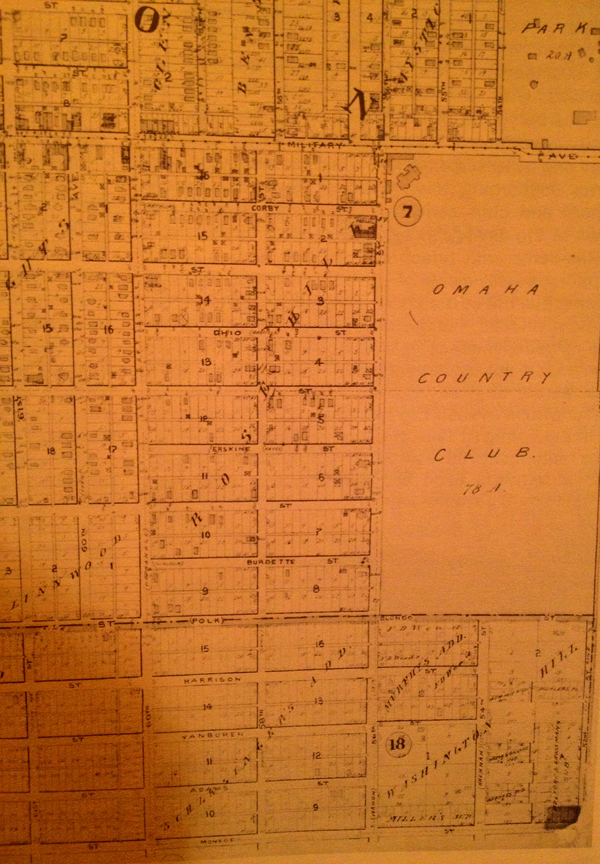
Although drawn up much later, this detail of 1918 plat map of the Benson area from Baist’s Real Estate Atlas Survey of Omaha, gives an excellent overview of how the Country Club was laid out with regard to our soon to be 2320 North 56th Street. Image courtesy of the Douglas County Historical Society. Featuring the Country Club on the right. Note “Military Avenue” on the northern most edge of the club and the homes of 56th bordering the west side. If you can spy it, there are only about five homes facing the club by 1918.

1907 tissue paper map of the OCC grounds. Obviously I have a map addiction. I include this document because I love the human touch. Imperfect and so cool. Courtesy of the W. Dale Clark Library Reference Desk clippings file.
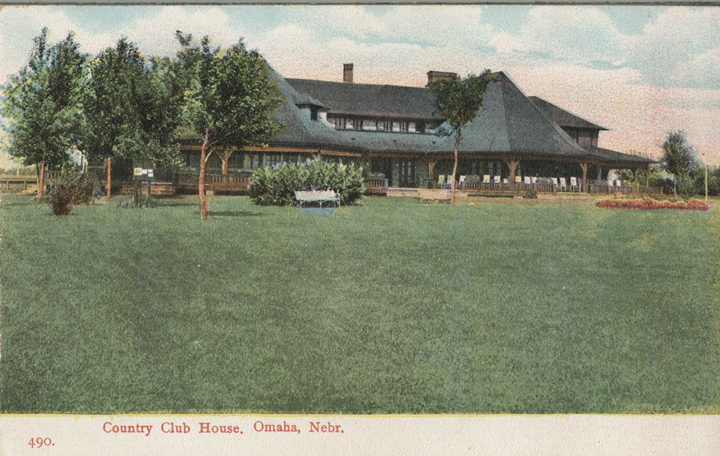
1908 postcard of the Omaha Country Club. Part of the Nichols Postcard Collection courtesy of the Douglas County Historical Society. “This postcard shows a view of the Omaha Country Club House, Rosehill Avenue, Benson, Nebraska. There is a large expanse of green lawn in the front, some flower beds near the club house, and the large club house with covered porches. It has the honor of being the first club of the type in Omaha and also in Nebraska. The clubhouse was located at 56th & Military Avenue.” Date: 1908.
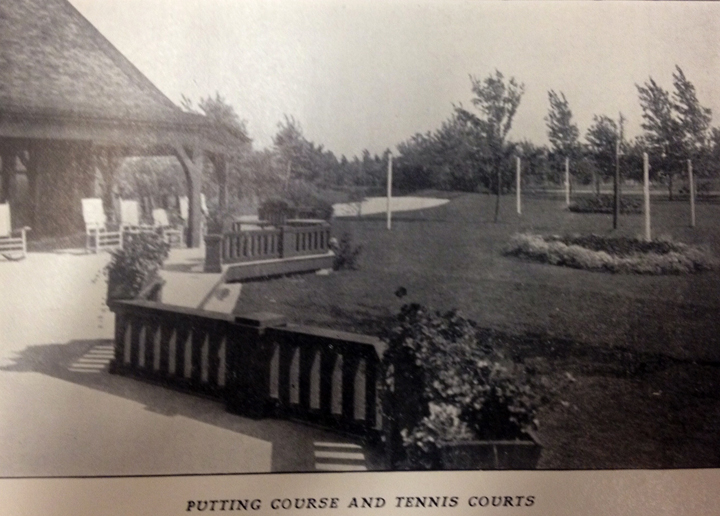
1907 OCC putting course and tennis courts photo from the same pamphlet mentioned below. Photographer is facing northeast angle. Courtesy of the W. Dale Clark Library Reference Desk.
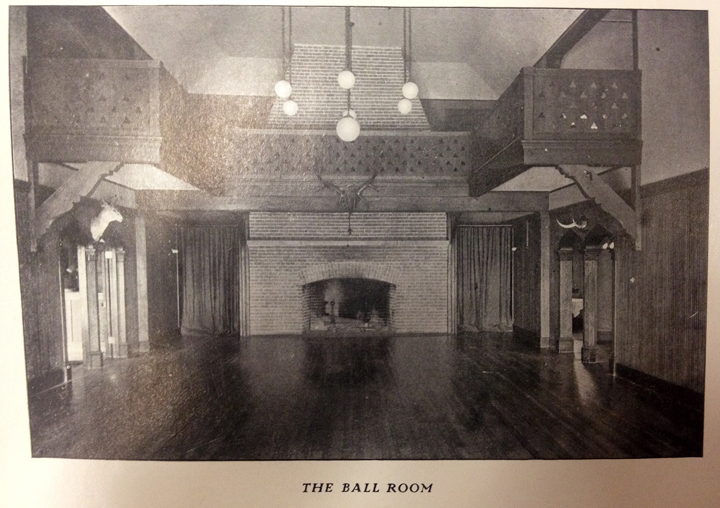
1907 photo of the Omaha Country Club ballroom, because if you are like me, we needed a peek inside. Image from a fantastic little OCC printed pamphlet, found at the W. Dale Clark Library Reference Desk file.
Archibald J. Love
I prattle on and on about the Omaha Country Club because its commencement, I would come to believe, enticed the Fashionable Set and their fantastic suburban homes to 56th Street-Rose Hill Avenue, thereby creating a new culture of the Country Seat. Like many of the prominent men in Omaha Society, Archibald “Archie” Love, local insurance man, real estate enthusiast turned developer, was one of the founding members of the O.C.C. The Loves owned land all over town, built a multitude of homes and moved often, by Miss Cassette’s standards—this standard set by a someone who liked to move apartments every year and get a feel for different architectural environs. I have written of Love quite a bit on this website, mainly tiptoeing in the wake of his 1920 movements but these early years, and certainly this Benson (Love) affair, was all news to me. I would discover A. J. Love and his wife lived at 623 North 19th in the 1890s. In February of 1899 Love hired Omaha Architect F. A. Henninger to design a new home at 38th and Dodge Streets. That summer Omaha was introduced to the attractive Love residence through a well-publicized photograph.
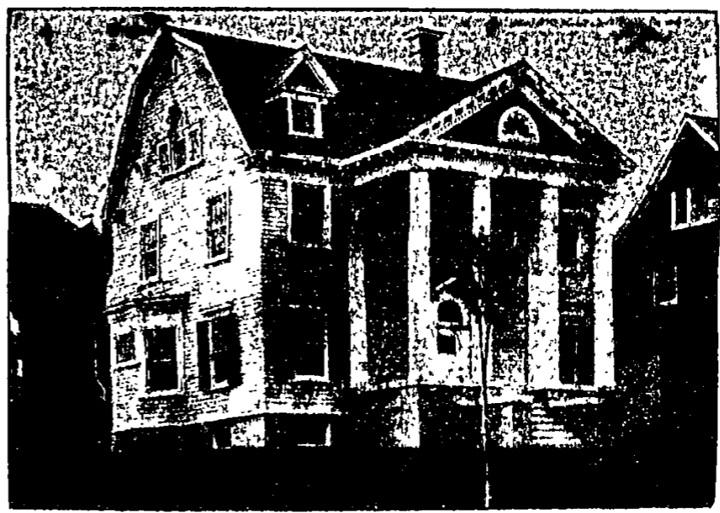
Later I would pinpoint the address to 116 North 38th Street, what I refer to as the “North” Gold Coast Neighborhood. A. J. Love always seemed to be in the right place at the right time and many times, preternaturally pre-dating the Smart Set. From my standpoint, Love was an Omaha tastemaker. Ghostly photo borrowed from the OWH archives.
Shortly after the inception of the Omaha Country Club, I discovered Mr. Love began amassing lots in the Rose Hill area, ever the bellwether of change.

This OWH image of real estate transfers reveals that in October of 1900 the Loves obtained Block 6, Lots 14-26 of the Rose Hill Addition. According to the Register of Deeds, our previously mentioned Mr. G. A. Lindquest sold Lots 3, 4, 5, and 6 of Rose Hill to Love. For the record the Lindquests would advertise 55 lots for sale in Rose Hill by April of 1902, leading me to believe this development was possibly their baby.

Not even a full month later “Archie J. Love and wife” had sold Lots 1-13 of this same Block 6 to an “E. J. Dickey.” The very deed of 2320 North 56th Street exposed Emresa Dickey had cherry picked Lots 3, 4, 5, 6 from Love’s collection. Those clues would lead to a Colonel J. J. Dickey. As it turned out, the Dickeys and the Loves were not only originating Country Club members but also long time friends as far back as the society pages could capture such frivolity.

The stunning Government Building of the 1898 Trans-Mississippi & International Exposition. Photograph courtesy of the Omaha World-Herald archives.
Colonel Dickey and A. J. Love were thick as thieves, with a number of professional and fraternal ties–having recently run a peanut and popcorn concession stand for five months in 1898, when Omaha was host to the Trans-Mississippi & International Exposition. I would come to believe that Love purchased the Rose Hill land with intention that his close friends build summer homes with him, abutting their Omaha Country Club. But before we traipse into these upper classes and their intricate webbing, a bit about the country seat concept.
The Artistic Country Seat
George William Sheldon wrote of the American country seat homes, designs, and their architects in 1886-1887. Offering exterior photographs, floor plans and his sometimes lively informal commentary, Types of Recent American Villa and Cottage Architecture with Instances of Country Club-Houses is a rich and mysterious tome—just the way I like it.
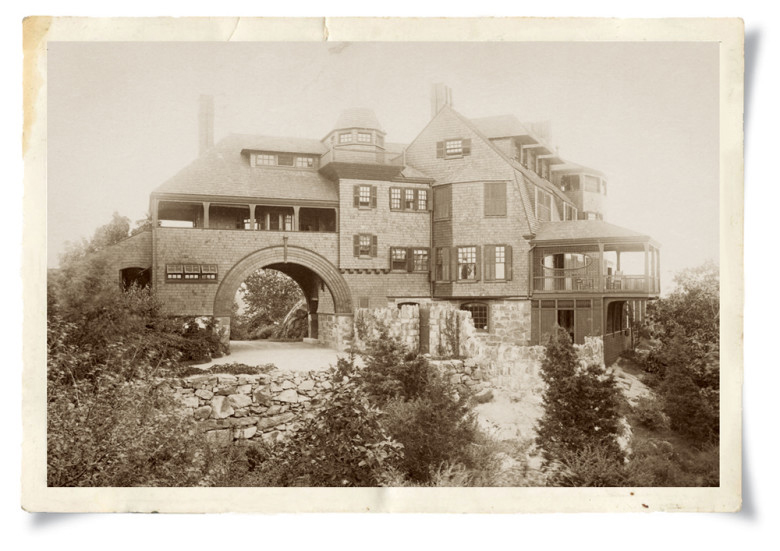
Manchester-by-the-Sea, in Massachusetts, my Shingle Style dream home now called Kragsyde. Faint-worthy.
Sheldon’s mostly New England survey related to an American audience the very romantic English idea of the country home—a large house, country mansion or estate situated in the country or suburbs, owned by (a wealthy) someone with another Proper House in town. It was all rather downplayed–the more than adequate bank accounts of these red-blooded Americans were not really addressed. And I suppose that would have been bad form but what was exposed spelled out that the American Swells kept their Principal Home, most likely downtown of a major city, and held a second or third house countryseat for summer holidays, house parties and hunt meetings. We saw this decades later in our Tomlinson Woods investigation. Through the Tomlinson Woods The name Country Seat, with regard to the house located in the suburbs, was first coined in 1575. But Gentrified Country Living was not something that Omaha easily subscribed to. As you very well know, we are not a very showy bunch, even today.
This idea of a second Omaha home, the Summer Holiday Home, has long fascinated me, probably because it is incongruent with our general innate, reserved conditioning in these parts. Also because it is just a hop and a toodle across any direction in town, a country seat seemed somewhat ridiculous but luxurious at the same time. I convinced myself it was like Omahan’s 1950s Cabin Preoccupation. An Omaha Society reporter from 1904 addressed the local aristocratic conundrum with a hoity tone I blushingly enjoyed. “Omaha has until recent time been peculiar in the matter of having no suburbs where society people reside the year round or even in summer; and for some years ‘Happy Hollow,’ the charming country seat of Mr. Nelson Patrick, had the distinction of being the only one of any importance. Of late, however, a change has been coming about. The Country Club has, of course, had much to do with the change and has really created a small suburb around itself in the last two years.” He or she (I am betting a She was allowed to cover such privileged matters) went on to outline the scrumptious summer season of 56th Street-Rose Hill Avenue. But before we inch one smidge further, let us pause and consider that the Patrick’s country seat, lovingly named Happy Hollow, was way out of town in what would become Dundee. I tip my hat to what is considered The Origin.
The Dickeys
John Jay Dickey, later known by his military rank, as “Colonel” or “J. J.” was born in Rushville, Illinois, the son of distinguished jurist of Illinois, T. Lyle Dickey. Poring over genealogy sites, I would discover Colonel Dickey was born in 1839. He married Caroline “Carrie” A. Honey in 1863. The couple had three children, William Lyle “Willie” (1864?), Lizzie Belle (1865) and Arthur (1872). I found wife Carrie died of an unknown cause by 1880. Colonel Dickey remarried in 1882 to Emresa L. “Mattie” Jordan. The couple began a second family of much younger children, Jay Jordan (1886) and Bertha (1892), although I found evidence that the Colonel maintained, what appeared to be, a strong connection to his older children.
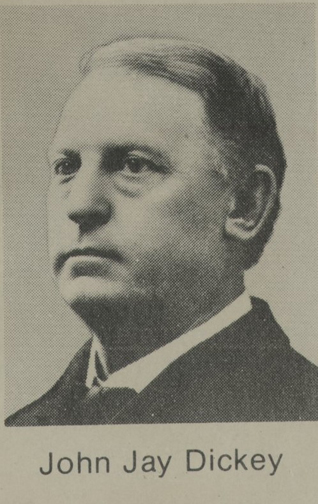
John Jay Dickey. Photo courtesy of the Douglas County Historical Society.
Colonel “J. J.” Dickey was head of the Western Union Telegraph Company and previously had led development of the Union Pacific telegraph system from Omaha west. Dickey’s name was nationally synonymous with that of Telegraph Pioneer. It would seem from his obituary he had a hand in numerous enterprises in town, as well as honored positions on esteemed boards. Personally, I had never heard of him. I only share that as an aside, because potentially you haven’t either and there is no reason to be surprised by that. It always makes me smile to think how many fabulous people might be lurking in our midst in any given Omaha home.
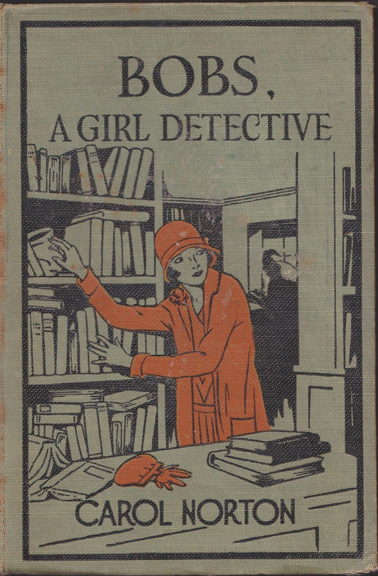
Much like their well-heeled friends, Colonel Dickey and wife Mattie were no strangers to the acquisition and selling of real estate across town, a passion I learned of through the Omaha Daily Bee. By 1898 the Dickeys resided at 25th and Dodge. The 1900 United States Census would distinguish the Dickey family living at 2418 Dodge Street. Son Jay was then 13 and Bertha was seven, in addition to live-in servants Harmals(?) Miller, Lizzie Furay, and Gus Michaels, coachman. The Loves and other Omaha Famous families were frequent guests in the Dickeys’ garden, illuminated by strings of colorful Chinese lanterns. A week long fishing trip to Wisconsin united the bosom friends of Colonel Dickey, Guy C. Barton, Frank Murphy, Archie Love, Casper E. Yost, Edgar Martin Morsman, Jr. and his brother Westel W. Morsman. I recognized these prominent Omaha names from other investigations, tipping me off to Dickey’s Top Drawer standing.
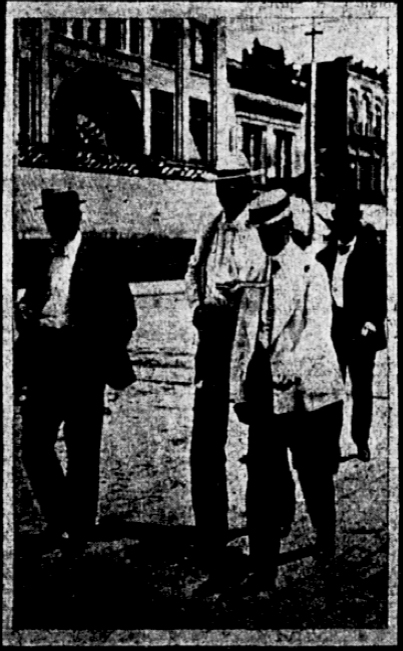
Image from “Snapshots of Well-known Omaha People” section of the World-Herald. I found J. E. Wilber, Colonel J. J. Dickey and A. J. Love walking through what looks like Downtown Omaha. Why do I include this phantom photo even though we cannot see the faces? I just love their summer suits and hats.
File this away, folks. Colonel’s brother, Charles Dickey, lived on Maui Island and the Omaha Dickeys often traveled back and forth to Hawaii for months at a time, particularly young son, Jay. Of note, the Dickeys were such well-admired travelers that 13-year-old Jay’s writings describing the pleasure of Hawaiian surfing were printed in the newspapers, to the delight of little Omaha. Colonel was rumored to have been stationed at Hawaii during his military service, something I read over and over, although I could not substantiate this fact. The family’s travel and ties to Hawaii were something I easily located through the Bee and the World-Herald. This tie-in will come up shortly.

1900 image borrowed from the OWH archives. Show me the smiling child who gets to stay three months in Hawaii on vacation without their parents’ watchful eye.
The Beginnings of Rose Hill Avenue
The oldest of the gracious summer homes along Rose Hill Avenue, later renamed 56th Street, were built at different times without official record as to the specific dates of construction. All have had fairly significant renovation and expansion, woefully, also not documented. As I said earlier, I hope to investigate each one at a later date so this will serve a brief overview for now, friends.
Through the Benson, Nebraska From Buffalo Pasture to City book, I found suggestion that insurance man, Archie Love’s home at 2310 North 56th was constructed first, around 1900. The Douglas County Assessor’s site has this perfect house listed as being built in 1890 but from my research, Love did not buy the land until 1900. You can place bets where you see fit to wager but I am estimating Love’s Summer House was the first one up, in and about 1900. If you are privy to definitive information, please share in comments!
These were the images I took back in May 2019. Peek at your own risk. I cannot be held accountable for your shortness of breath.
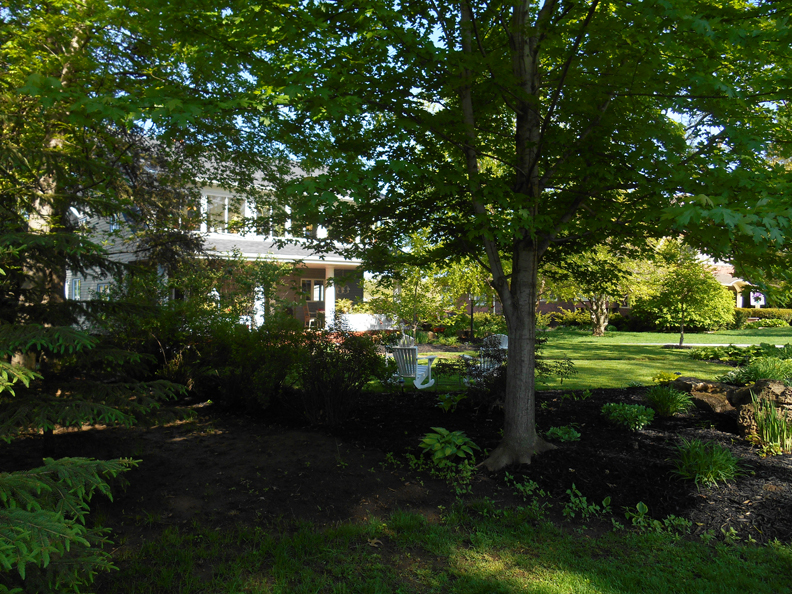
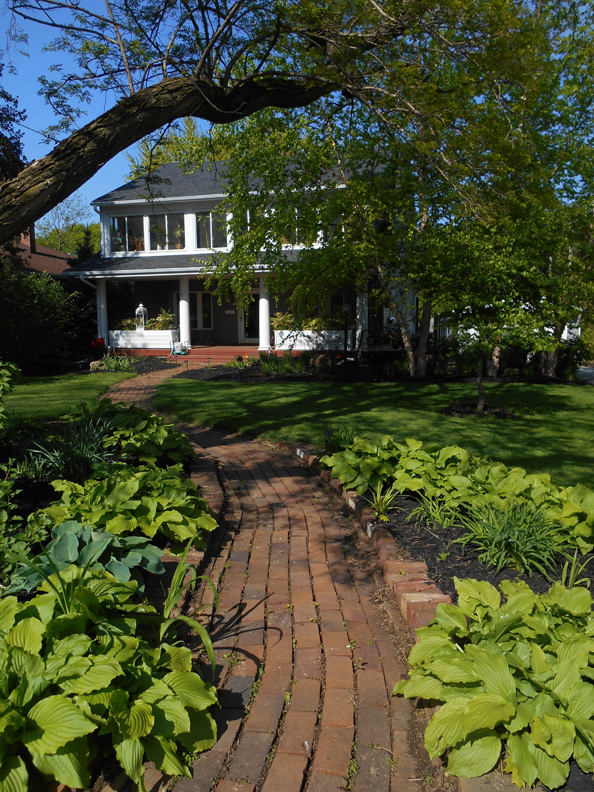

Edward H. Sprague, of the Omaha Tire and Rubber Company, roughly built his summer getaway in and around 1900. The Sprague home, located at 2606 North 56th was originally named the “Hedge House” because the property was completely surrounded by a hedge.” I adore this sun-dappled stucco with its obvious sleeping porches, generous windows and hideaways. The woodland garden grounds are perfect for children or gnomes of any age. Smitten, I say.
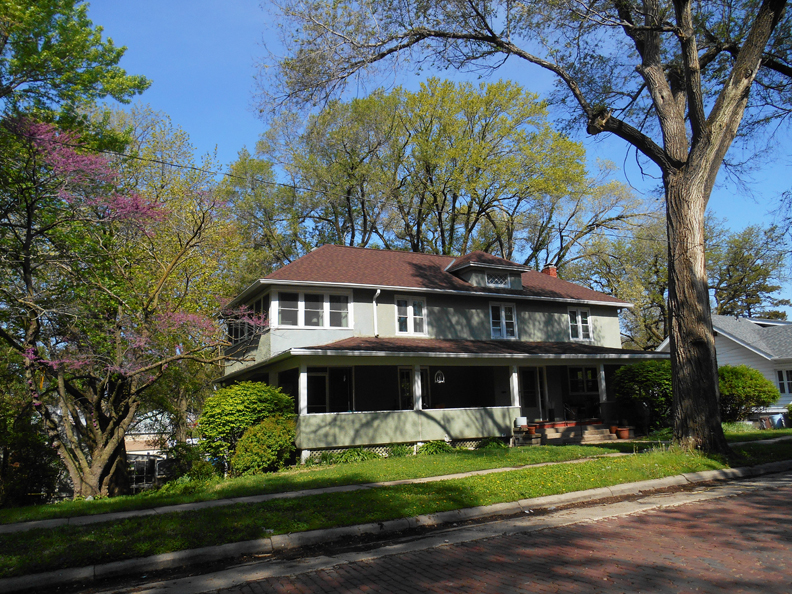
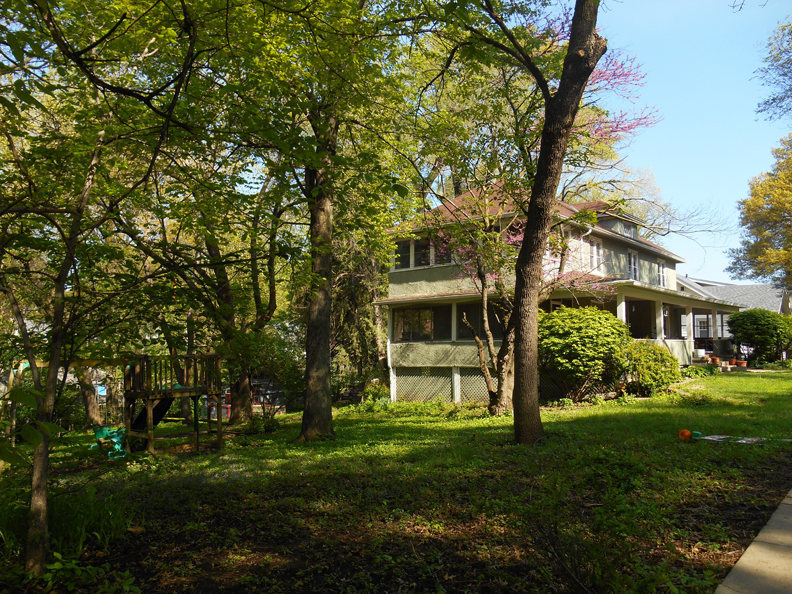
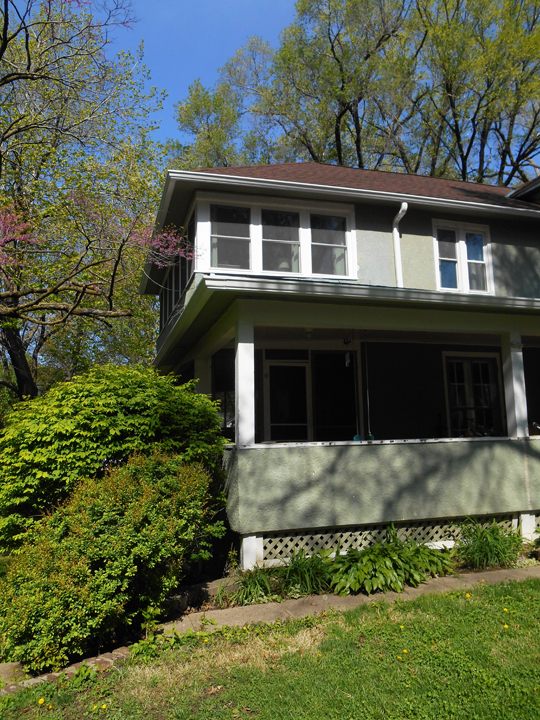
Origins of 2320 North 56th Street
We know by sales records that Colonel and Mattie Dickey bought their land from Archie Love in 1900. It is generally thought that 2320 North 56th was built in 1901, although I’ve also seen 1902 and 1903 build dates. The Dickeys named their country home, “Aloha,” believed to have been built in “a Hawaiian style of architecture.” As previously mentioned, the family’s love of Hawaii was determined to be an influence.
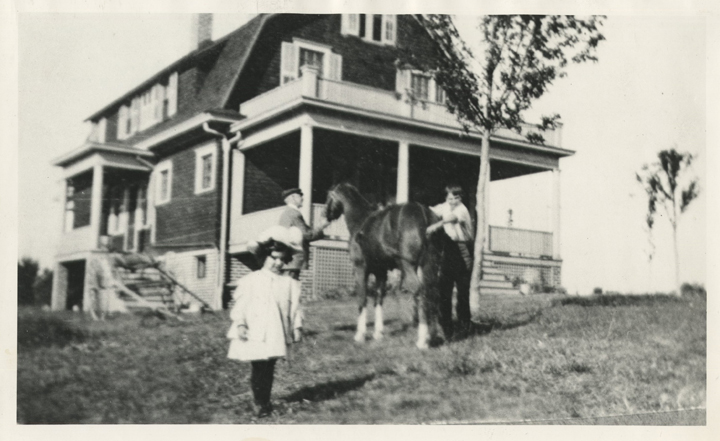
Original photo of 2320 North 56th Street, courtesy of the Douglas County Historical Society. Is that little Bertha and brother Jay, behind?
An early photo of Aloha, unveiled by the Douglas County Historical Society, dazzled me. How could this be? No one could have detected the humble outline of the early version of the old home, in the new light of this glorious, expansive Shingle Style. I could not tell if this was the front or the rear of the home. It most likely had a front gable style, the roofline, although cut off in the photograph, appeared of gambrel style. It certainly appeared to be of country stock. A convenient distance from his town house on Dodge, the Dickey summer house as well as the Love and Sprague holiday abodes overlooked their luxurious flat lawns, the graceful sweep of driveways or paths leading to porches and secret garden. From their Rose Hill Avenue perch, the land was thought to slope down to the Omaha Country Club. I would imagine that unburdened view was Mr. Dickey’s pride.
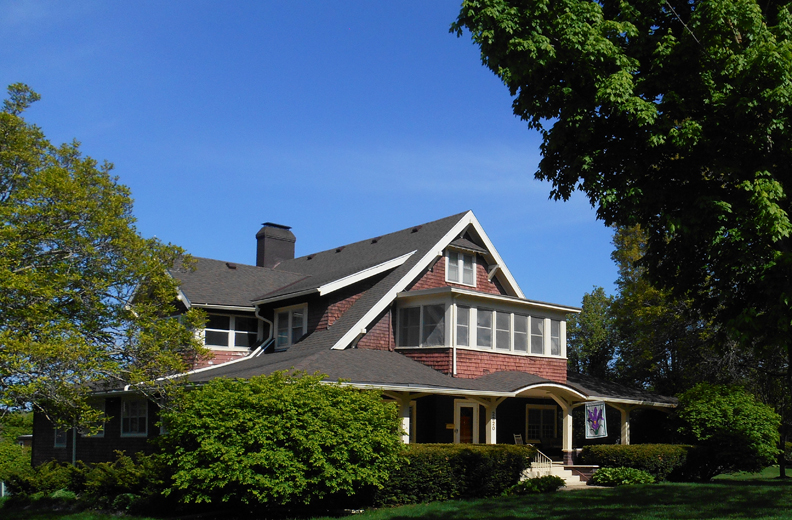
Although foggy, I would surmise the initial smaller version did have a shingle covering. (I will show you another photo in a bit displaying shake shingle, at least on the porch.) Furthermore I found a document titled “2320 North 56th Street” in the Douglas County Historical Society’s collection, written by an unnamed historian. It read, “The original structure was built in 1901 by a Colonel Dickey. It scaled three stories but was considerably smaller. The original property line extended all the way to 58th Street with orchards and wild growth. The house was named ‘Aloha’ and we think the reason for this was that Colonel Dickey, stationed in Hawaii, built the original house similar in style to the Hawaiian architecture. He had also engraved ‘Aloha’ on the fireplace mantel, which has subsequently been removed during a renovation project in the late 1950’s. The house lighting is not Tiffany but is similar in color and irradiance.” The illumination of the original property line was in following with the deed and lots purchased from Archie Love. It was starting to make more sense. Fun to envision the surrounding land all the way to 58th Street, now filled with smaller homes to the west.
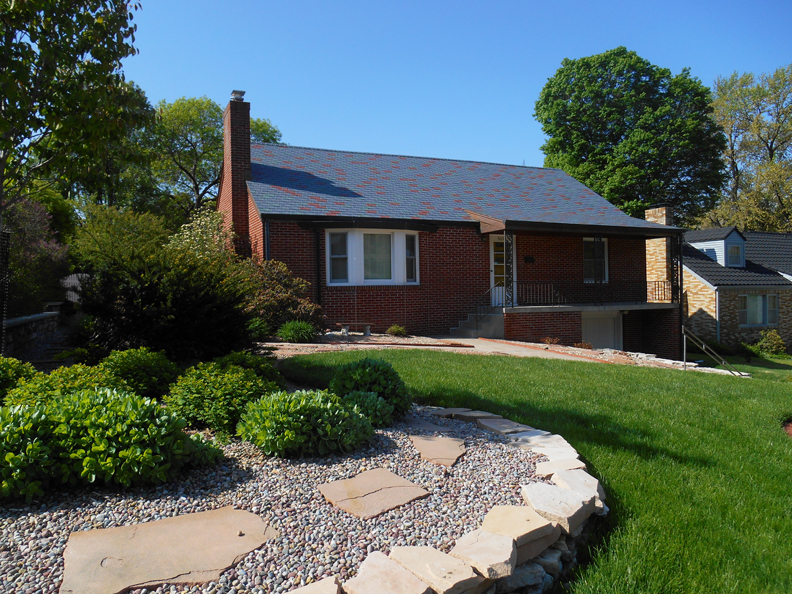
Perfection on Erskine, directly to the west (behind) of our Shingle Style at 2320 North 56th Street. This lot and all of the lots to the west would have been owned by the Dickeys originally. I love everything about this Minimal Traditional including her excellent roof tiles.

Although Aloha was intended as a summer home only, I was interested to find Colonel Dickey wanting to unload his “In-Town” 25th and Dodge Street home while he holidayed. According to this OWH personal mention of 1901, Dickey was thinking of building another principal house, in addition to his country Aloha.
Joyous Holiday Houses
When the May 1901 social announcement for the Omaha Country Club opening season was put forth, the three new country homes were so stirring, they also made the bill. “Around and about the club house, a great deal has been done in the way of beautifying the grounds. Trees to the value of $800 have been set out and in addition to this numerous little parks have been laid out and filled with flowers and shrubs. Since last year, E. H. Sprague, A. J. Love and J. J. Dickey, club members, have erected neat and commodious cottages on the west side of the grounds, where they will reside a greater portion of the summer.”
Later the record revealed the three homes of Rose Hill Avenue were something of a destination point for regular Omahans: “The many trees planted this year add to the appearance and the new summer homes of Mr. J. J. Dickey, Mr. E. H. Sprague and Archie Love nearby are a great improvement. The road west of the links is a good place to show off horses and turnouts and there is a constant stream of such along there, especially on Sundays, when the club is an attractive objective point for a drive. The place is easier to access now, since the Walnut Hill line runs straight through. Beginning with last Tuesday every other car goes to Benson, making a twenty-minute service.”
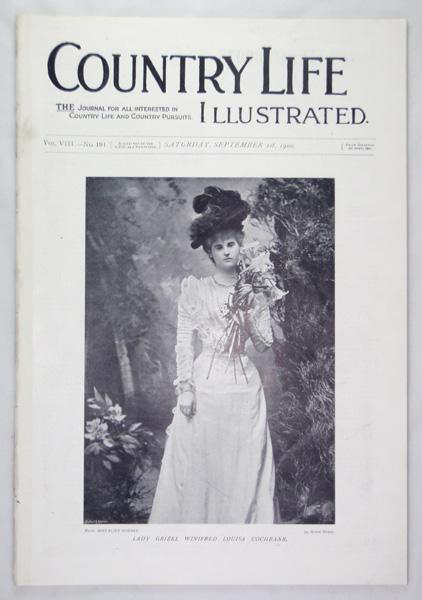
Original Issue of Country Life Magazine Dated September 1st 1900
We can infer those spending their summers on Rose Hill Avenue knew they were on display. This was gentrified country living and there was a standard to uphold. They would Make the Country, as it’s called. At this early juncture, without the oversight of competition, they were most likely divining new etiquette. They wouldn’t want their City Society counterparts assuming they rode out to the country on a load of pumpkins.
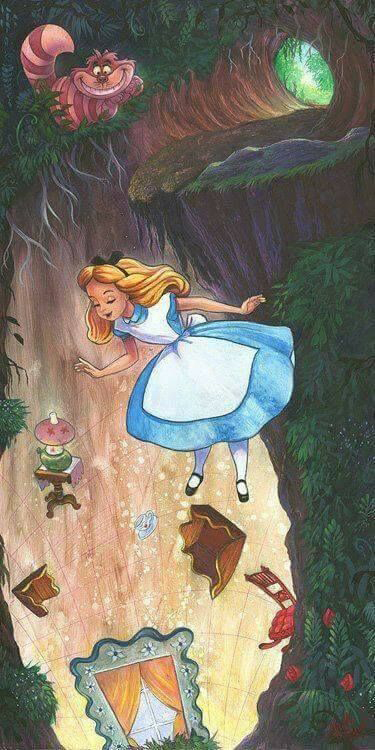
The Love, Sprague and Dickey structures’ collective whistle as summer country club homes were architecturally clear, due to the casual, albeit functional touches not found in city homes. The large, shady porches, abundance of bedrooms for guests and multiple sleeping porches, placement of windows on three sides to gain optimum cross-breezes as well as their positioning “on the heights adjoining the country club,” seemed to signify the slower pace of the leisure class.
Can you see the furniture draped with dustsheets in the off-season? Shuttered away, storm windows and doors bolted down. What might this desolate road and her summer country seats have looked like in a quiet February blizzard? I close my eyes. Just nicely.
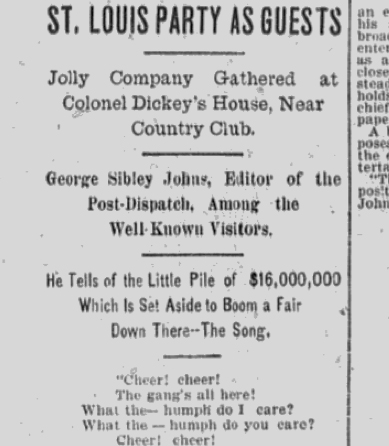
Aloha did not have her official debut until late June of 1901, when Mr. and Mrs. Dickey opened the home to a traveling party of seventeen St. Louis friends. For the next two weeks it was projected “to be the scene of much merriment. Mr. Dickey met the party at the station this morning with a tally-ho.” Prominent in the party, was friend, Mr. George Sibley Johns, editor in chief of the St. Louis Post-Dispatch.

Mr. Johns summering next to the Aloha shingles of our focus. While Johns was entertaining the press, “other members of the party gathered about, some reclining on the comfortable couches with which the broad veranda was liberally supplied, others lounging in the easy chairs.” Sigh… This photo was said to be taken outside of Dickeys’ Aloha but now that I circle back after months of contemplation, it looks more like the Omaha Country Club clubhouse. Do you see it also? This had me doubting my previous belief that Aloha was slathered in shingle.
Mysteries Clues and Loose Ends
I found an article from the fall of 1901 referring to the Dickey’s Aloha as Rose Farm of Benson. I am not entirely sure if this was a misspelling of Rose Hill or an early nickname for the rose-covered area. I found it perplexing and although untidy, I love little oddities like this.
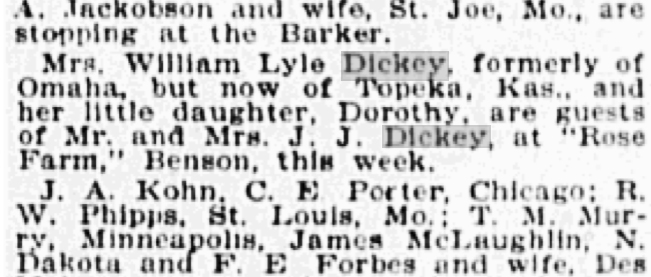
OWH November 14, 1901 was Aloha originally called Rose Farm? Or was Rose Hill perhaps named Rose Farm? William Lyle Dickey was Colonel’s son from his first marriage.
While I did not pinpoint when exactly the Rose Hill Avenue-56th Street brick road was laid, I came across a special 1902 meeting of the Village of Benson board of trustees, aimed at determining the charges to the Rose Hill Avenue owners for the cost of constructing “a wooden sidewalk.”
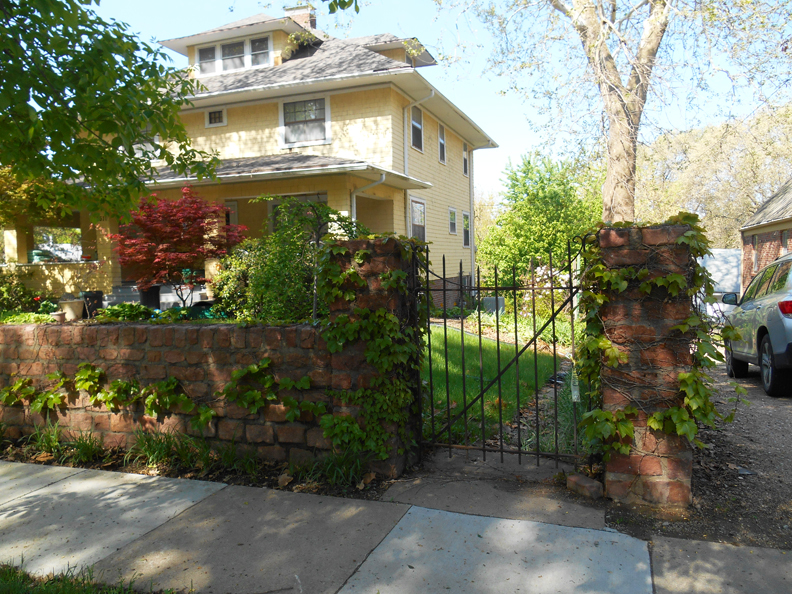
Of the east facing summer homes of Rose Hill, the beautiful girl at 2610 North 56th Street was purportedly built in 1902 for local attorney, Francis Brogan. I had mentioned it my in Transformer house investigation. This classic American Foursquare featured French doors that opened out to the elongated lounging porch and her windows providing a pivot for more of that country air cross ventilation.
There was also a fifth large, summer house on 56th Street, in the 2200 block, that was actually built much earlier. Originally a small frame house owned by the Alfred Smith family, 2218 North 56th Street was enlarged by investor and executive F. J. Farrington and became known as “Villa Acres.” Drive by for your own breathtaking view As Soon As Possible. More on these homes later.
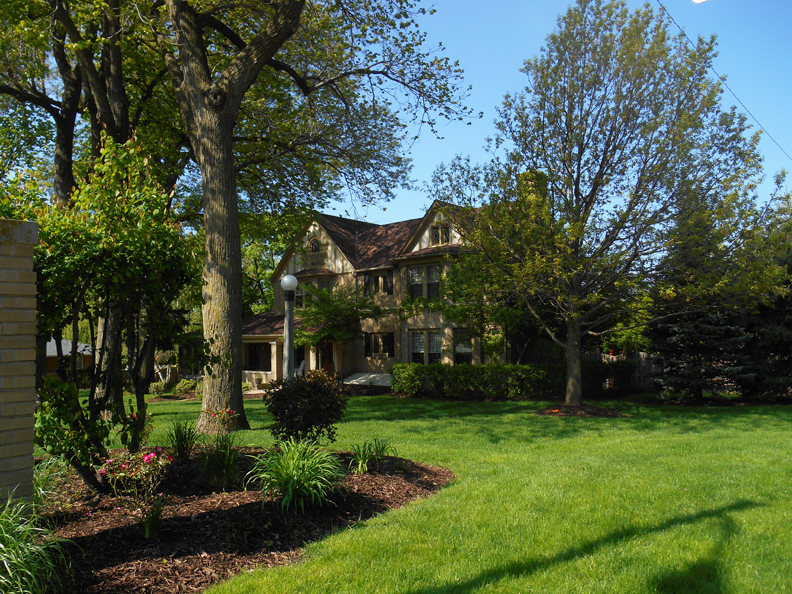

Sudden Deaths
1902 brought a series of horrific events to the Dickey home. I hope I am not being overly dramatic, for I recognize I am given to speaking my mind around here but truly, this turn of events did not sit well with me. For starters I should explain I believe Colonel Dickey did sell the family’s 25th and Dodge Street house and they all moved straightaway into Aloha as their Principal House. And really, I suppose, that is where I feel the rug was whipped out from under me as an amateur sleuth and professional dreamer, let alone how the poor Dickeys must have felt about the matter. I assumed we would get the Dickeys settled into Aloha, wipe shoes on the bristle mat, cross through the rooms to unfasten the shutters at the windows, and remove sheets from pieces of furniture and get down to the business of living. And yet, I wouldn’t have supposed young Jay Dickey would fall gravely ill in September of 1902.
An acute attack of peritonitis hit poor Jay, then but sixteen years old. “The case was of very rapid development” apparently caused by leakage or a hole in the intestines. Within the week, Jay John Dickey died at Aloha, the Dickey’s youngest son and heir.


Sept 7 1902 Omaha Daily Bee revealed that Jay Jordan Dickey, aged 16 died in the family home. Funeral was to be held at Aloha. Many friends of the parents and of Jay attended. These must have been dark days. The Omaha Daily Bee reported Mrs. W. M. Pike (formerly Miss Belle Dickey) and her little daughter, Caroline, would spent weeks with Colonel Dickey at Aloha.
A few months later the December 30 World-Herald shockingly announced Colonel Dickey had died at Aloha as well.
In dramatic Edwardian fashion the World-Herald reported, “Shortly after 7 o’clock Monday night, death stalked into the home of Colonel John J. Dickey and removed there from one of Omaha’s most respected and progressive citizens. The death of Colonel John J. Dickey came as a great shock to his many friends, as it was but a few days ago that he was upon the streets apparently in good health.” After dinner on Wednesday he complained of feeling ill. Doctor was summoned. By Friday morning his illness developed into pneumonia and became was deathly ill all weekend. This was back when pneumonia and flu were leading causes of death. I was so sad for Mattie and her minor daughter, Bertha.
Dec 31, 1902 Omaha Daily Bee. Funeral of John Jay Dickey. Funeral held at Aloha. Leading official of the Western Union Telegraph Co to arrive in town. Funeral services were again held at Aloha. “The spacious halls of the Dickey residence were scarcely sufficient to hold the multitude of friends of the deceased, among whom were many from other cities.”
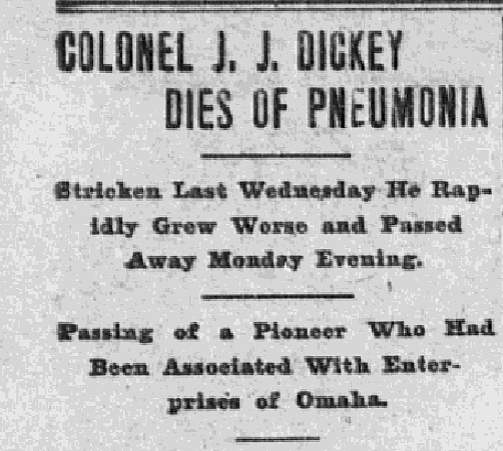
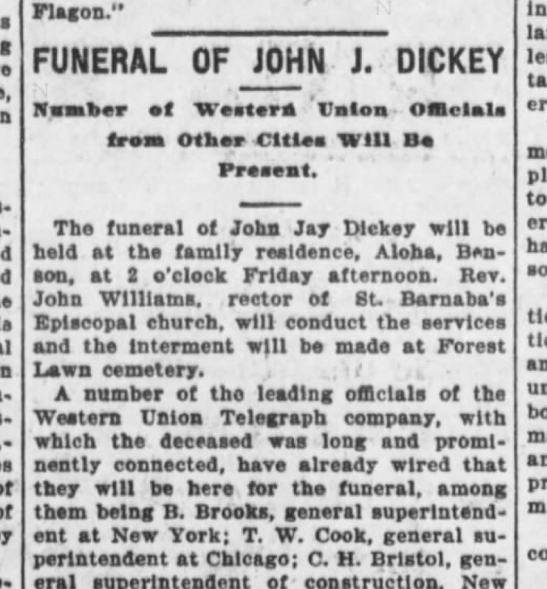
Omaha Daily Bee: Jan 3, 1903. “Imposing throng of friends follow the late Western Union Official to his grave.” Funeral held at 2 o’clock from the family home at “Rose Farm.” Men prominent in the telegraphic affairs of the world journeyed thousands of miles from all parts of the country to add their last tributes to those of a host of Omaha friends and associates at the grave of the deceased. The lower floor of the house was crowded to its utmost to accommodate the throng of mourners. The casket stood in the center of the large reception hall and back of it, filling the alcove and covering the entire west wall, were banked the floral offerings of Colonel Dickey’s friends. The services at the house and cemetery were read by Rev John Williams and the music was by members of the St. Barnabas church choir. Noticeable among the floral tributes was one, which came from the employees of the Western Union and American district telegraph companies of Omaha and South Omaha. Omahans did not often see a man built of Dickey’s heroic scale melded with modesty.
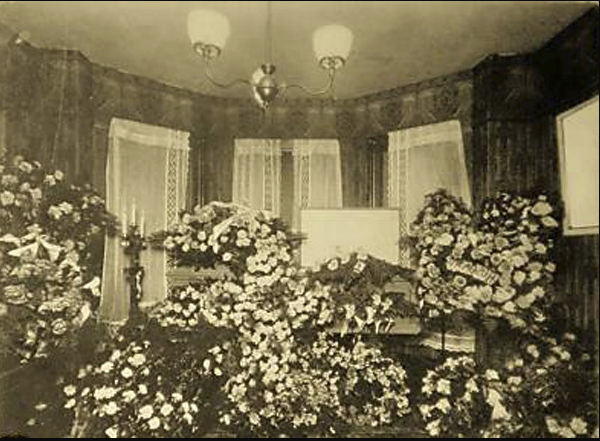
Within days, the gossip columns were reporting that Mrs. Dickey and daughter, Bertha had moved into Mrs. Dickey’s sister’s residence at 418 South 38th Street. No doubt, a fine, upstanding home within the Gold Coast Neighborhood. I could understand. A few months later, Emresa J. “Mattie” Dickey sold Lots 3, 4, 5,and 6 of Rose Hill to a Thede B. Reed. The whole thing made me sad for the Dickeys and for their Aloha Dream Home. Oh, to have designed this home alongside the Omaha Country Club. The loss of that ideal and her beloved male family members, a forced separation, probably made Mrs. Dickey want to move back to town or into a hole with a blanket.
Honestly the thought of righting myself, approaching the 2320 North 56th Street door and rapping again felt exposed after the Dickeys’ removal. And maybe some in our group of detectives felt this way and already cut out from our huddle due to exhaustion. The good news in all of this entanglement was that a beautiful dream was on the horizon for the Dickey’s Aloha. This dream, I suspect, might have been the prepossessing vision for this summer country seat after all.
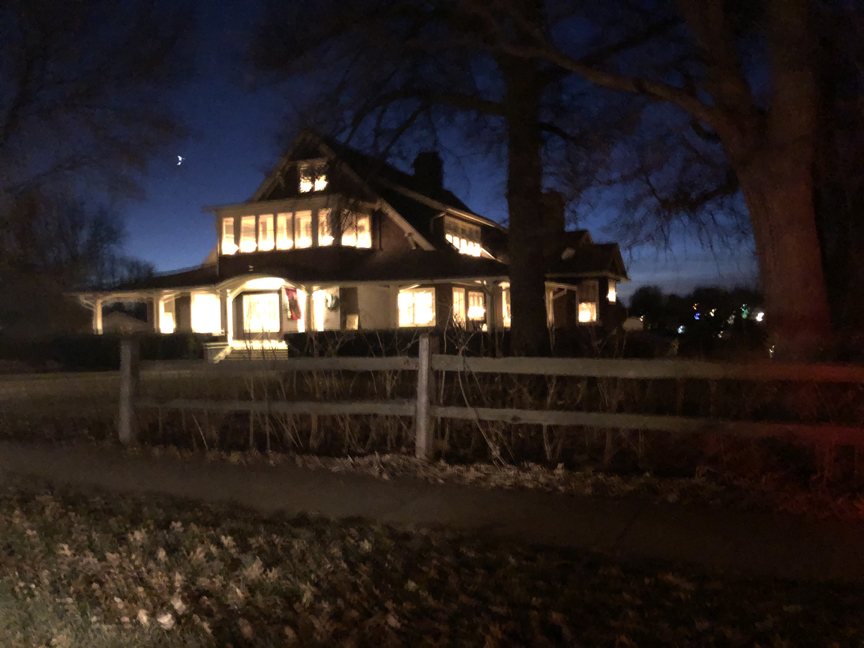
The Sale
Emresa Dickey sold her Aloha at 2320 North 56th Street to Theda B. Reed in April of 1903.
Theda was married to well-known Abraham Reed, soon to be director of the U. S. National Bank and son of real estate developer, Byron Reed. Theda Adeline Capron Balch (love her name, so gothic) and Abraham Lincoln Reed married in 1894. The couple had four daughters, Elizabeth Balch, Erna Marion, Thede Adeline and Mary Wattles (died as an infant in 1904).
Through the social clues, it appears Abraham and Theda were friendly with the Dickeys. Early indication revealed Abraham Reed was also a charter member of the Omaha Country Club in Benson in addition to holding position on the board of directors and executive committee of the Trans-Mississippi and International Exposition in 1898. Abraham Reed was heavily involved with the Omaha Grain Exchange, director of the U. S. National Bank and created the United States Trust Company; he financed and built the Fontenelle Hotel, donated the land for Prospect Hill Cemetery after forming the cemetery association. His contributions to Omaha were widespread but not always discerned, in his father’s shadow. Upon Byron Reed’s death, son Abraham took over as head of the real estate business and to many, that was his legacy.
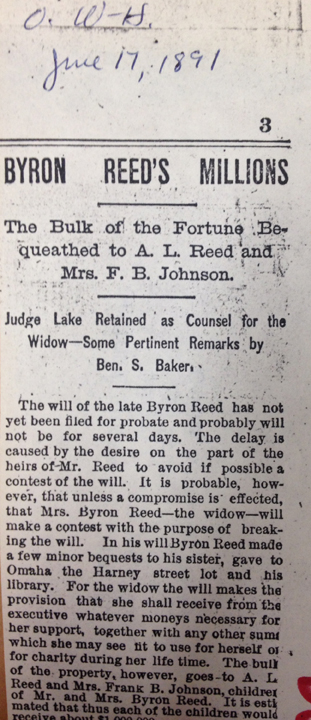
Clipping courtesy of the W. Dale Clark library reference desk.
And it is true, Byron Reed was Omaha Famous–a pioneer realtor, his self-made business remains a successful company to this very day. Byron Reed is also regarded as one of Omaha’s earliest Caucasian residents, having arrived in 1856, a developer, businessman, elected city official many times over and early philanthropist. A noted collector, particularly of rare coins, medals and letters, parts of the Byron Reed Coin Collection are esteemed tops in the nation. Byron Reed and his wife, Mary Melissa Perkins Reed moved from Downtown Omaha to built their family mansion high on hill outside of town at 2502 Dodge Street. This gracious home later became the first location of Father Flanagan’s home for boys in 1917. Flanagan rented the family’s mansion until moving his Boys Home out to Overlook Farm in 1921, renaming it Boystown.
Residential Swapping
Around the time the Loves, Dickeys and Spragues were envisioning their Rose Hill Avenue summer mystique, the 1900 Omaha Directory revealed Abraham L. Reed had already taken over as president of Byron Reed Company. Upon their purchase in 1903, the young Reeds made public their intentions: Aloha would be their summer home. Through the City Directory, I tracked their principal residence to 3620 Farnam Street, within the Gold Coast Neighborhood.
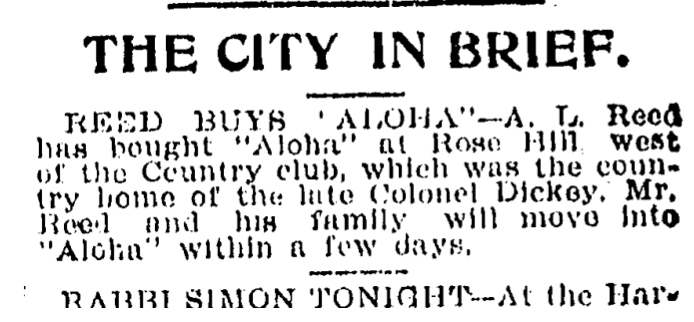
OWH April 3, 1903 Reed buys Aloha, announcing they would be moving in that summer.
What I was most interested to learn was that the Reeds sold Mrs. Dickey their two lots in the Gold Coast Neighborhood, specifically in Reed’s Addition. I have written of this area elsewhere, an addition developed by the Byron Reed Company. It would appear from this transfer, dated days after the Aloha announcement, that the two family’s swapped properties, with Mattie making a two thousand dollar profit. Always good to have a little walking around money, as my grandmother used to say.
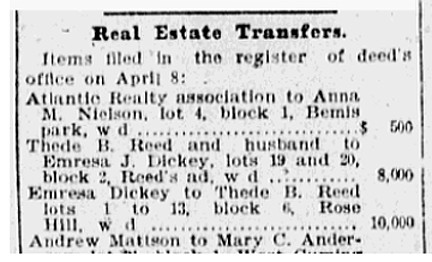
OWH April 9, 1903 real estate transfer
Meanwhile of a strange but perhaps agreed upon plan, the 1904 Omaha City Directory divulged Emresa and Bertha Dickey residing at 3526 Harney Street in the Gold Coast. In October of 1906 the Omaha Daily Bee reported the A. L. Reed family would move into the Dickey house at 3526 Harney for the winter.

Oct 21, 1906 Reed’s move from the Benson home for the winter to the Harney street house?
In the summer months the Reed family would openly enjoy Aloha. They got good press. “Notes on Omaha Society” in the Omaha Daily Bee frequently documented the informal suppers held at Aloha as well as the summer dances hosted for the Reed daughters and their many friends. The Reeds were known to employ a cook, two maids, a gardener and a chauffeur. From the Historical Society report: “It is noted that the children were always late to school at Brownell Hall on 14th and Williams, at that time. The reason was that the chauffeur was instructed by the children not to get them there on time, because religious instructions took place the first hour.”
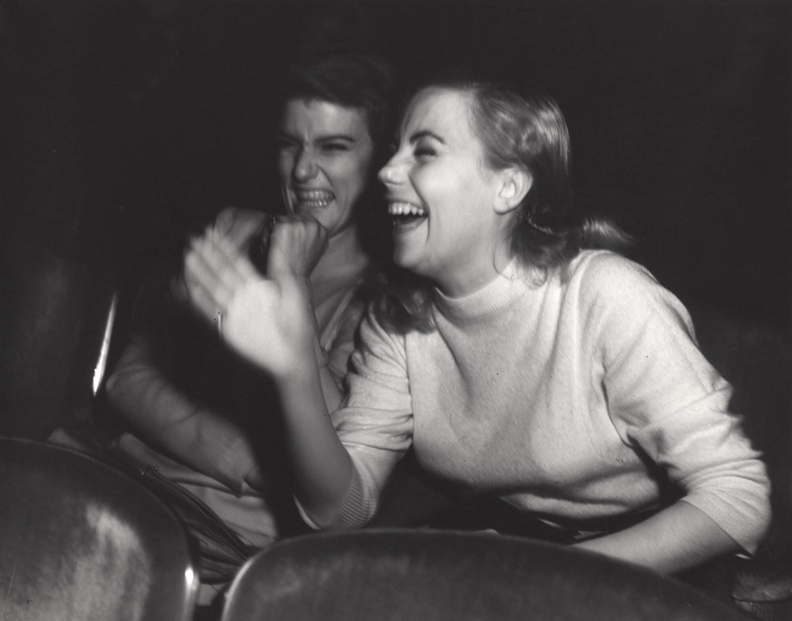
I have read a number of reports stating that the Reeds were thought to have moved full-time to Aloha as their primary residence in the 1906-10 time period. Contrarily I found evidence that the Reeds continued these In Town For The Winter transitions until 1916. I could not find any more moves after that date. From the Daily Bee, Dec 1915: “The C. C. Rosewaters will move to the Fontenelle Saturday and their home will be taken by Mr. and Mrs. A. L. Reed, who will close their country place, Aloha, for the winter.” The following year, the World-Herald reported, Dec 15, 1916 “Mr. and Mrs. A. L. Reed and family are moving this weekend from their summer home ‘Aloha’ to the L. G. Doup home at 3607 Jackson Street where they will spend the remainder of the winter.”
Renovation Controversy
According to the Douglas County Historical Society documents, in about 1906-1910, Aloha became the Reeds’ permanent home and was enlarged and remodeled in a style known as Shingle. I have written often and flirtatiously about the Shingle Style, my favorite. The houses of McKim, Mead & White are thought to have popularized this style, lending itself easily to the Eastern Board, summer holiday or country seat purpose. Architect Frank Lloyd Wright was also one of the proponents of this style of architecture. From the Douglas County Historical Society report from an unknown historian: “The house as it stands today, was enlarged in 1906-1910. The house contains about 7,000 square feet of space. The fireplace was bricked over and the mantel removed in 1955.” I also found reporting that the Reed Aloha home was greatly enlarged and remodeled after a 1915 fire. I could find no documentation of this fire and scurry as I might, found nothing by way of proof. Please tell us if you have any information on this mystery fire and subsequent rebuild.
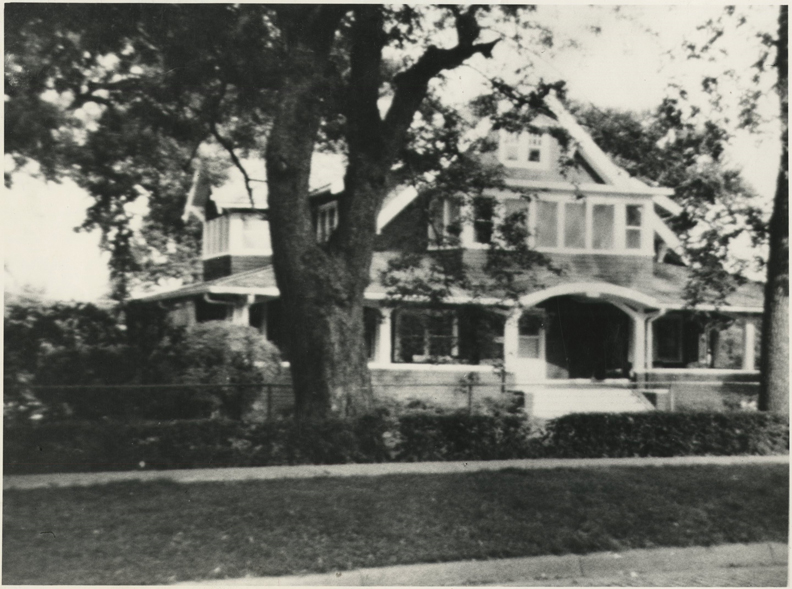
Image of Aloha’s renovation courtesy of the Douglas County Historical Society. Fascinating to glimpse at this beauty.
Shingle Beauty
I would like to assume that these Shingle Style additions were constructed around the original home. I am sure the current owners could speak to these architectural curiosities within the outer walls. The large wraparound porches and gabled front, in addition to the multitude of cross gables, multi level eaves, dormers, expressive selection of windows from all views make this home a stand out to me. A very different home from every angle, all covered and unified by the monochromatic dark shingle. Perfection.
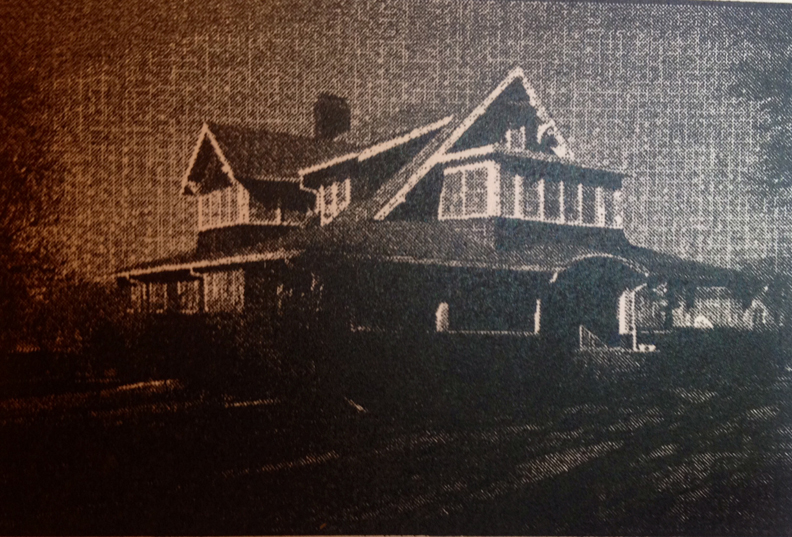
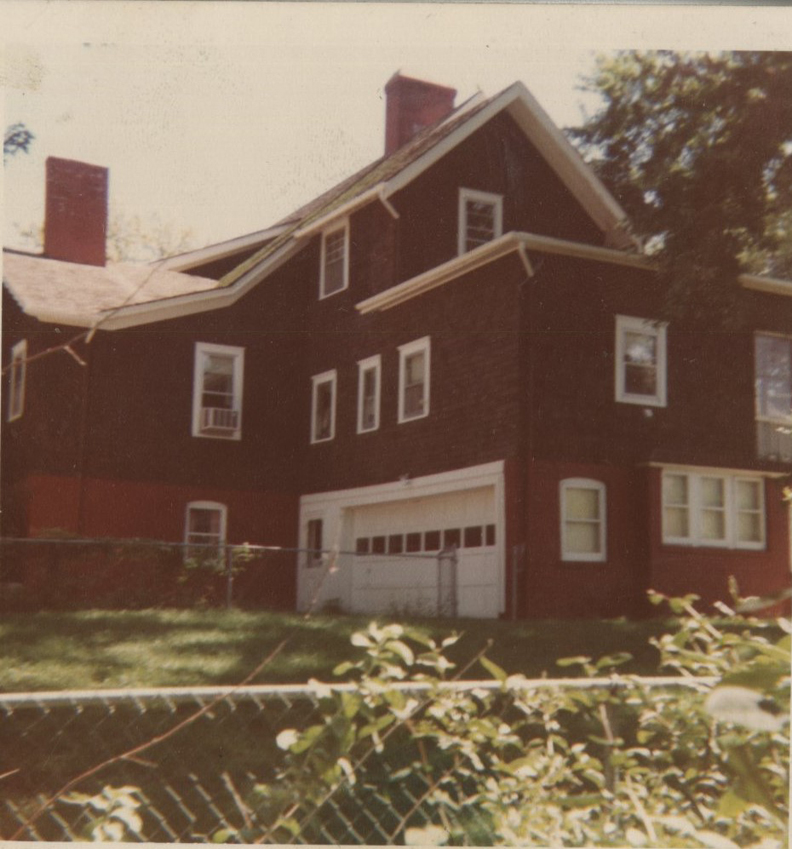
1970s image of 2320 North 56th courtesy of the Douglas County Historical Society.
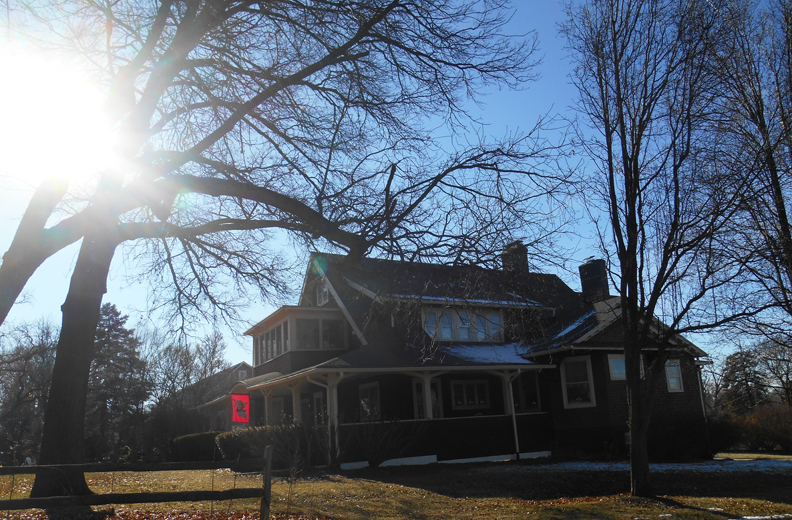
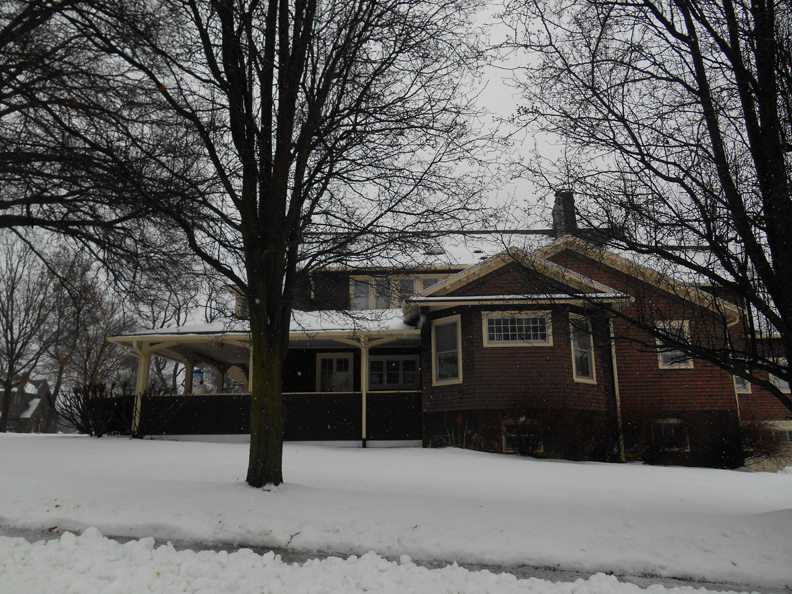
The interior is rumored to feature a mahogany staircase, upstairs sleeping porches. A 1961 real estate ad described the home as completely carpeted. “Fireplace in immense living room, cozy sitting room, music room, formal dining room with fireplace, office, sunny first floor laundry-utility room with builts-ins everywhere.” The formal dining room at 1,000 square feet is thought to contain Steuben Glass light fixtures. From a 1972 advertisement for the house, I learned the home offers six bedrooms with five bathrooms, containing a master bedroom on the main floor. There is supposedly a “paneled rec room.” Oh please let it be pine! From a number of sources, the home’s kitchen was remodeled in 1955 by St. Charles Kitchens of Omaha and even moonlighted as a model from the company’s national advertising. I would discover that after Mr. Reed’s death, the Goedeker family owned the home. Mr. Goedeker ran Nebraska Custom Kitchens at 4601 Dodge Street. It was all rather tidy.
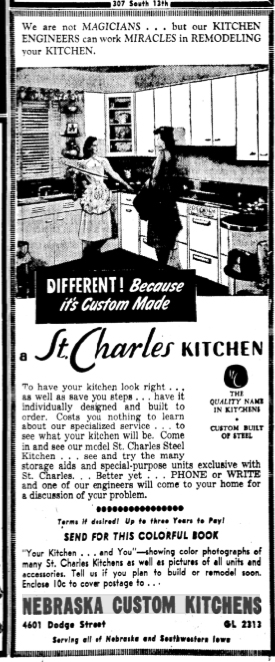
Great 1949 Goedeker advertisement for the MCM marvel, the St. Charles Kitchen.
Changes to the Come
In 1914, Mr. and Mrs. Archie Love moved to another country place outside the city—what they soon christened Loveland Farms out west. This scrumptious area was later developed into the Loveland Neighborhood.
The City of Omaha annexed Village of Benson, including the Omaha Country Club and Golf Course in 1917. (Some reports say 1915.) In 1922 the Omaha Country Club announces it had plans to build up north at 69th and Country Club Road and sell its Benson site. In 1926 Theodore Metcalfe and the Metcalfe Company, a local real estate developer, purchased 100 acres from the Country Club. By 1927 the Omaha Country Club had moved to its new location. Metcalfe was said to subdivide the grounds into 510 large, residential lots. The pretty homes on the east side of 56th Street began to fill in the once green space. The view from Aloha was forever changed.
“Plans for the addition called for large lots, winding boulevards lines with flowering shrubs, ornamental lighting and a community center at the original golf course clubhouse and tennis courts, “ according to Lynn Meyer’s “Country Club National Register of Historic Places Registration Form.” Later his report describes, “The streets in County Club are a combination of those that extend the surrounding grid system and those that follow the gentle slopes of the old golf course.” I never knew why there were such fascinating, irregular street intersections but that is one of my favorite parts of toodling around this area, aside from ogling the glorious houses.
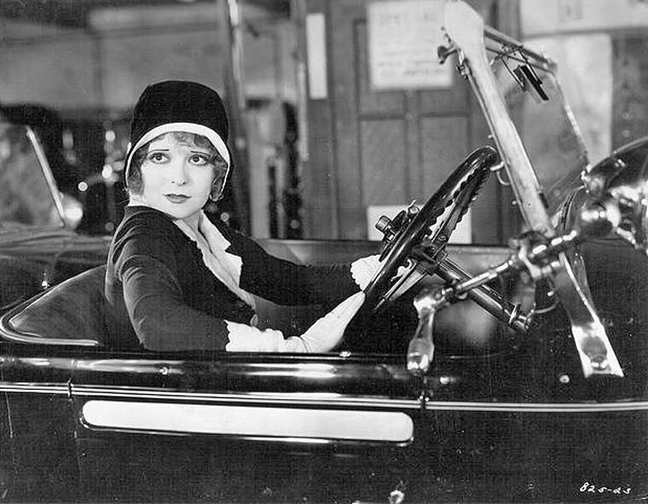
Death of the Reeds
The Reed family would continue to own and live in Aloha as their year round home until 1952 when Abraham Lincoln Reed died.
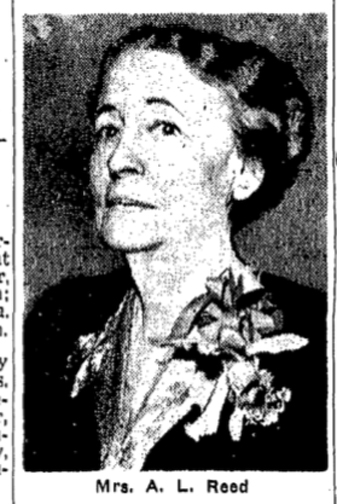

OWH September 1946 archives: “Mrs. Theda Balch Reed, 73, wife of A. L. Reed, chairman of the board of Byron Reed Company, died Thursday after a long illness at her home, 2320 North 56th Street.” 1952 Mr. Reed photo courtesy of the W. Dale Clark Library reference desk. I would find a photo and obituary at the Reference Desk of my favorite W. Dale Clark Library downtown. At the end of May of 1952, Abraham Lincoln Reed died at Aloha at the age of 87. He had retired as chairman of the board of the Byron Reed Company in early 1951.
Glory Be, is anyone else wondering if there are whispers in the Aloha Halls from all its deceased owners? Such a special spirited place it must be.
From there, the house at 2320 North 56th Street was bought and sold a number of times, used as a private home to a number of families and I made fervent notes on each one but this investigation was becoming a Very Long Story. Of note, in the mid 1980s the home was being considered for a youth emergency shelter but received very public pushback from the neighborhood due to proximity of other shelters. Aloha has been lovingly cared for by its forever family of many decades. This brings a wide smile.
Beauty Book
I took the following photos at different times in the last year. I marvel at how differently the shake shingles and her structure looks in the different season. I hope you enjoy them.




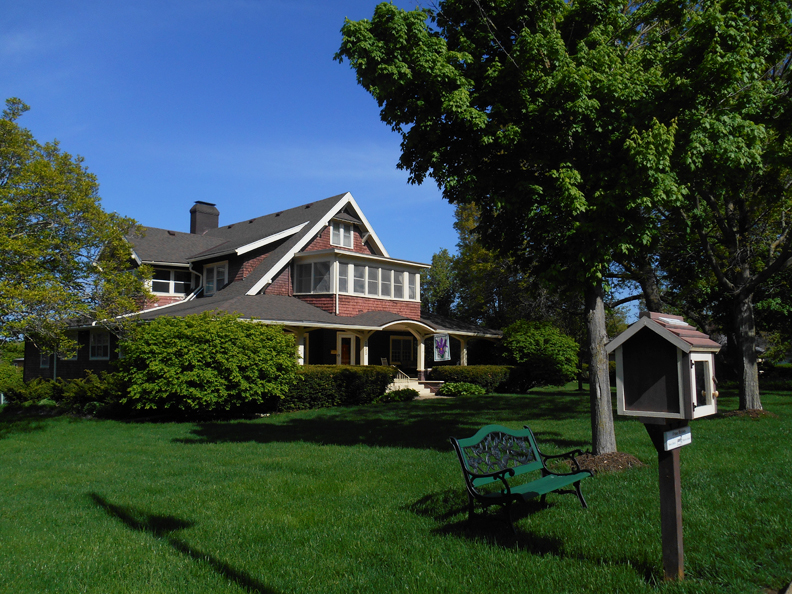
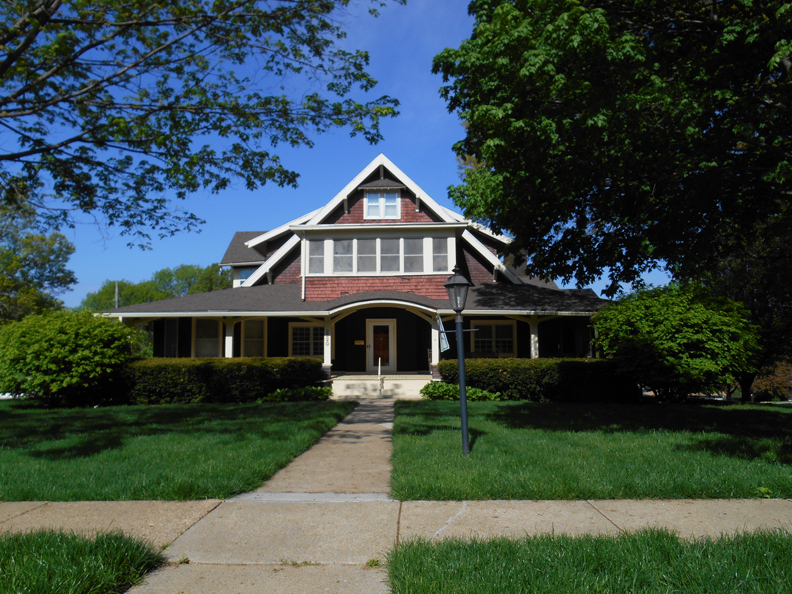
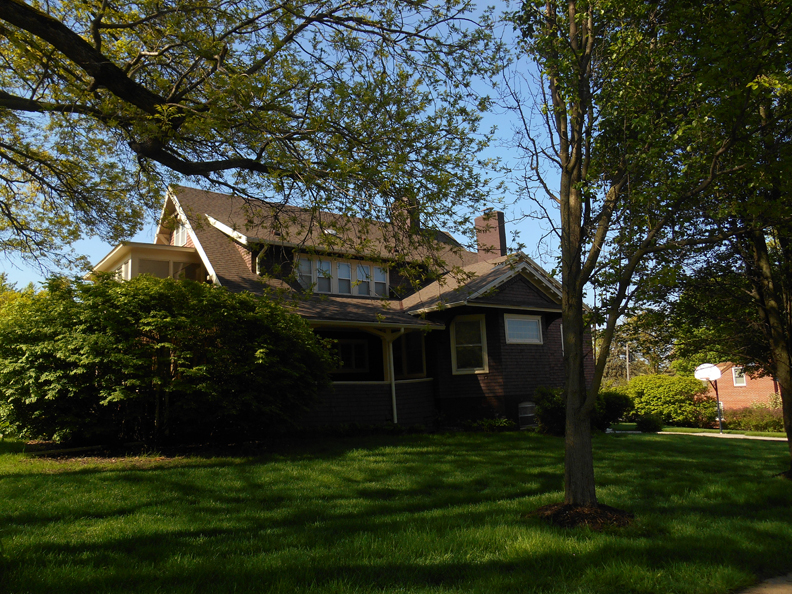

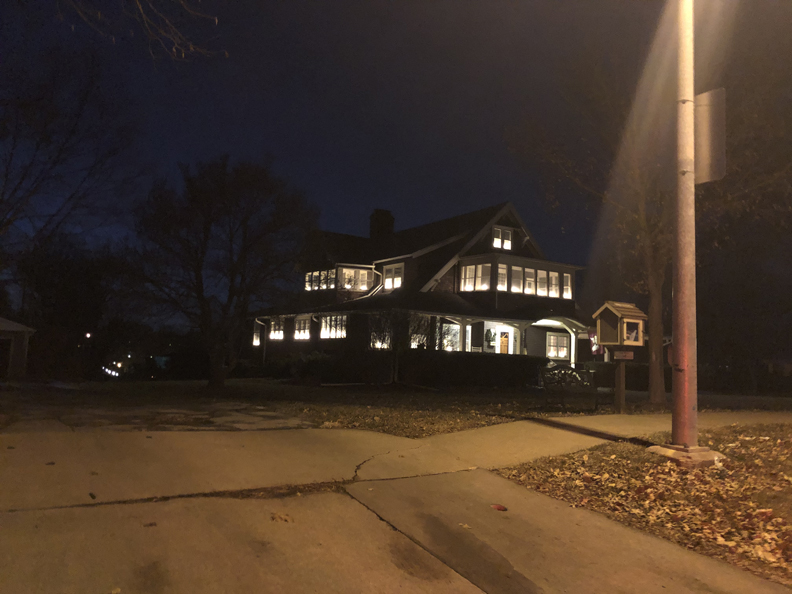
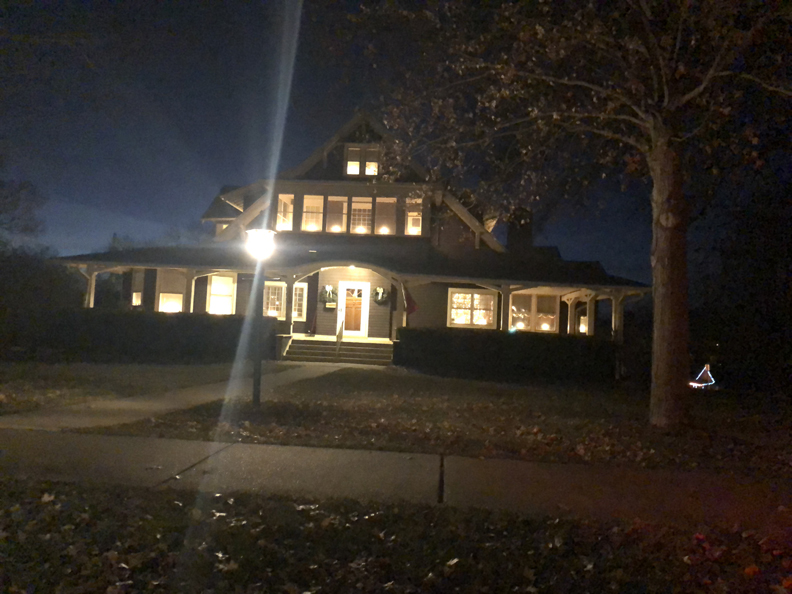
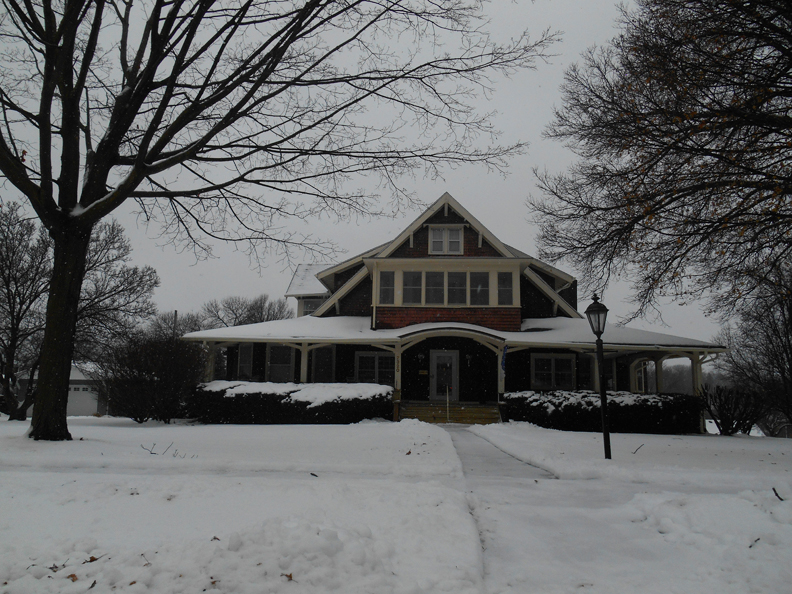
Look off into the range of the eastern, morning light. A glance down the bricked lane offered, what I imagined to be, natural gardens offset by come-hither crumble paths. We are told these gardens once were the producers of great tangles of wild roses. In its early days, packed viewing cars would take curious citizens past these estates to visit the few sprinkling of homes on once Rose Hill Avenue. Just so they could imagine what it might be like and just how very pleasant to live in a sun-warmed, picturesque summer home. A lingering look-see delighted and fulfilled the mind’s eye. The image of the Aloha home, her easy, graceful grounds, the wide expanse of porches, her airy views, the sleeping rooms, the imagined guests, the parties strewed with paper lanterns, the conjuring of staff to service one’s every whim, would shape the public’s consciousness. Where their large rooms contained sheeted pieces of furniture stored for another season. Each could imagine a stroll around the Shingle house to the garden door to wipe his and her shoes on the bristle mat. Something richer. There was something more colorful, beautiful, and seemingly effortless out there. This vision offered proof unlike any found in a book or one’s toilsome day-to-day life. In its early days, the homes of Rose Hill Avenue captured Omaha’s collective imagination. This is one of many places I hope we store in the large and sprawling house of our dreams because it is important. Quite the Summer Shingle…
Interested in more Shingle Style? Check out my other investigations:
Mysteries of Omaha: 8120 Pacific Street
Mysteries of Omaha: 2226 Howard Street
The Secret of Gooseberry Hollow
Mysteries of Omaha: 5120 Mayberry Street
This is only a small part of the story. I welcome your feedback and clues on the Country Club District, the Rose Hill Addition and the Still-glorious Shingle Style House of our focus. Please feel free to leave a thought in Comments. Thank you, detective friends.
If you like what you see, you can keep up with my latest investigations by joining my email group. Click on “Contact” then look for “Sign me up for the Newsletter!” Enter your email address. It will then display “Thank you, your sign-up request was successful!” Make sure to check your email address to confirm. You will get sent email updates every time I have written a new article. Also feel free to join My Omaha Obsession on Facebook.
© Miss Cassette and myomahaobsession, 2020. Unauthorized use and/or duplication of this material without express and written permission from this site’s author and/or owner is strictly prohibited. Excerpts and links may be used, provided that full and clear credit is given to Miss Cassette and myomahaobsession with appropriate and specific direction to the original content.
For J. J. T. Always in our hearts.
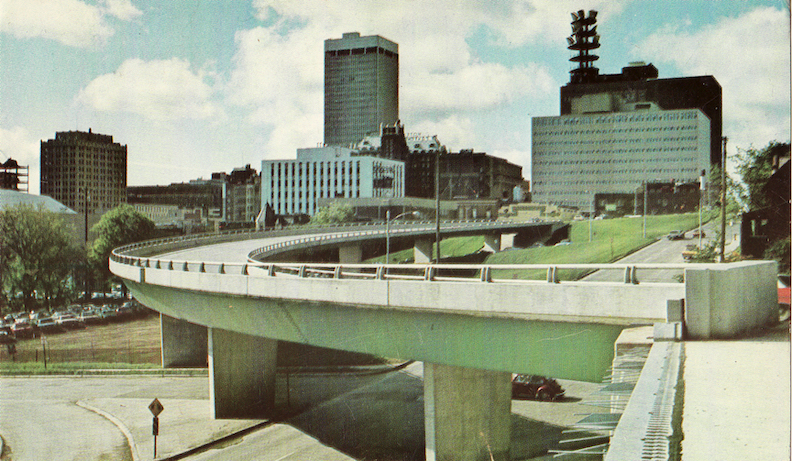

Hi, love your story on my old CC neighborhood. One correction-when Father Flanagan was renting the Byron Reed house it got to small, he found the German American Club on South 13th st available and sizeable and affordable due to the unpopular Germans at that time. They got a deal and rented until Father Flanagan was able to get a lone for the Farm. The 13th street building is still standing although it is now a bingo hall with cheap siding hiding its beauty! Very sad!
Ahhh, thank you, Jill. I always appreciate corrections and new information. I will check into the German American Club on 13th. Thank you so much!
I grew up in the Sprague home at 2606 N 56 (40’s 50’s and 60’ssmy parents liived there until 2001. I loved the house and the neighborhood and said I woud never move. Well that changed afteer college and marriage Whenin Omaha visiting, I love to drive through the od neighborhood.
Oh my goodness, Kathleen. I might need to touch base with you when I get to that story. Love your family’s home!
Our family lived at 2298 Country Club before moving to 5120 Mayberry, and I loved the Country Club neighborhood! In the 70’s, there were plenty of kids to play with, and we walked to Gallagher swimming pool in the summers. Of course, Tastee Freeze in Benson was a favorite.
You write so well, and your research is fascinating to read.
Thank you, Nancy. So good to hear from you. I thought of you and your beautiful Mayberry house when writing this story. I, too, grew up at Gallagher pool! I have no recollection of the Tastee Freeze, however. Thanks for the memories.
Another wonderful story of early Omaha. Love it
Hi, thank you for writing this wonderfully researched story. We have lived in the Villa Acres house since 2012 and it is a wonderful home for us (it still has an old speakeasy in the basement ;>) We’ve just about completed a restoration (although I’m not sure we’ll ever be really finished) and have much information on the house and street feel free to contact me.
Stephen Eulie, I’ve been in your home a few times back in the 1960s when Lee Seemann owned it, as I was a friend of their son with the same name. There used to be a circle drive that is blocked now with your fence, and I don’t think they had a pool back then.
I was so interested in ALL of this! My great great grandfather was Byron Reed and I was trying to dig in a little deeper without paying for it thru the ancestry sight, LOL, about other descendants of the family. I actually grew up a block away at 2317 N. 55th and never knew that “family” lived a block away …. Many years earlier, of course! I don’t remember being told this – I remembered more that Nick Nolte lived around the corner for a bit at 56th and Grant! Thanks so much for all your research, I still love Tudor styles, information about the Gilded Age and Omaha! Wonderful photos and history. I do not live in Omaha any more, but will take a drive down “Rose Hill Avenue” the next time we are back!
Amy, how fun! Cool that you lived a block away. Such a great part of town and I especially love it now when everything is growing. Enjoy this summer, Miss Cassette
Amy Peterson, the website brought back memories yesterday as I went through it. My address was 2040 N. 55th St., whereas yours was 2317 N. 55th, about 5 houses apart. I used to walk by your house every day when I went to Benson High, and it seemed to me that a guy named Dave Burn, or Burns, who lived between you and me and whose mother baked excellent banana bread, lived near there; he lived on the same side as you. I was unaware of Nick Nolte, but he lived catty-corner from Lee Seemann Jr. (2218 N 56th St.), a fellow I used to hang out with a lot. I found out later that Lee’s father (same name) was good friends with Warren Buffett, who was a bomber pilot during the Normandy invasion, which coincided with my dad’s landing on Utah Beach during WW2. I was drafted in 1966 and did Vietnam, and my parents ended up relocating to Virginia shortly after that. I drive by the old home whenever I get up that way, but that’s not very much. Thanks, Mike Dundon.
My husband’s family (viz. Theodore Metcalfe) were involved in the development of real estate in Omaha’s Country Club district. Do you have any information about the Metcalfe family, specifically his grandfather Richard Metcalfe? And of their home in Omaha?
Stephen Eulie, I’ve been in your home a few times back in the 1960s when Lee Seemann owned it, as I was a friend of their son with the same name. There used to be a circle drive that is blocked now with your fence, and I don’t think they had a pool back then.